TERRA ITALIA Newsletter No 2 | 2022
Dear Readers and Fans of Liguria,
Welcome to our second annual newsletter, which comes with plenty of news. We have also updated Terra Italia’s web page design making it even more user friendly and giving additional information on each property such as google coordinates and more. We would like to invite you to browse through our web page and discover what is new as well as the many new properties entering the market.
We would also like address all those of you who have already found their way into Liguria as residents but remain curious to discover new regional places on the doorstep of their newly found homes.
This newsletter focuses on the joys of autumn and we would like to introduce you to a number of interesting places to visit and locally produced wines and where to taste them. We also take you on an excursion to Imperia and show you the culinary highlights of the season.
Enjoy the journey.
Kind regards,


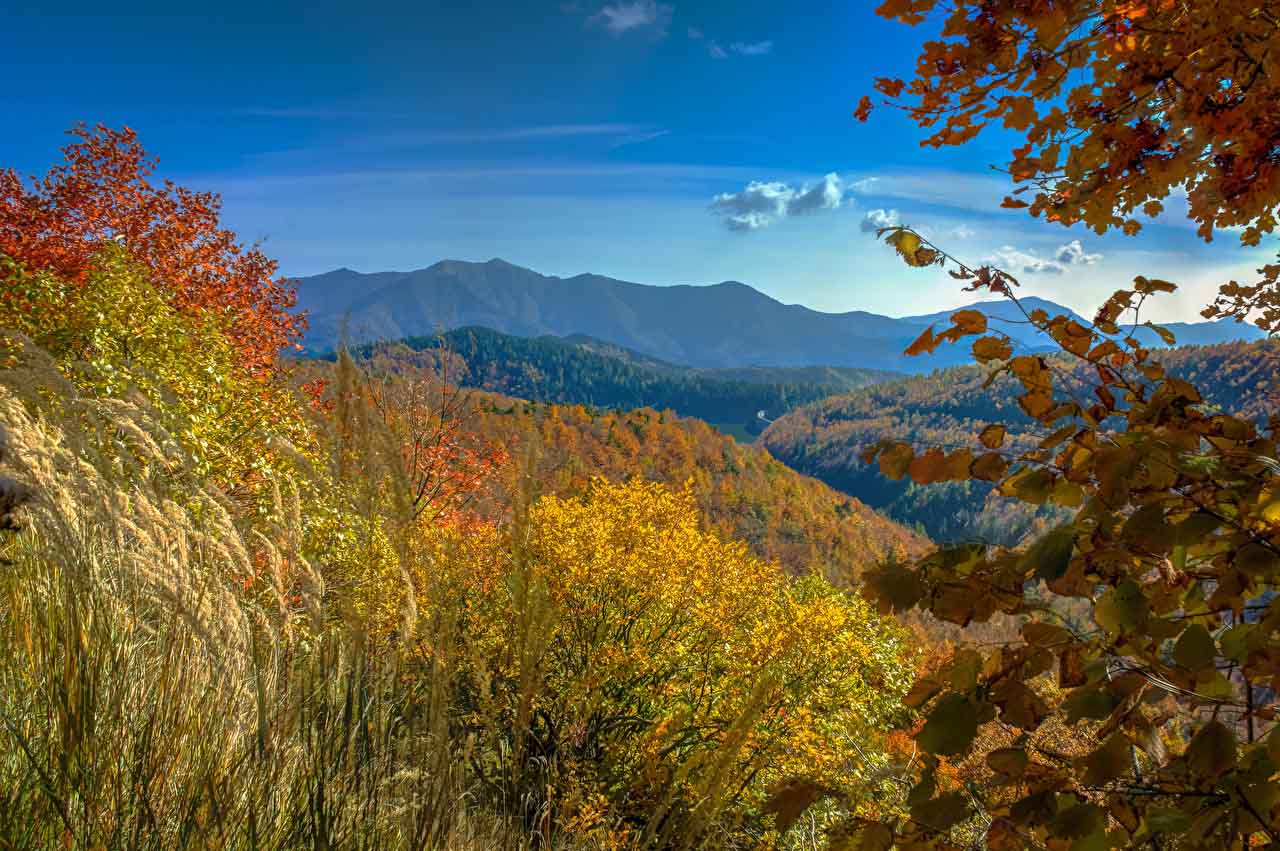
Here on the Riviera, the months of October, November and December are very special months. Most of the tourists have returned home and the region is much calmer with empty beaches inviting for long walks on the waterfront. The air is clear and the weather still beautiful and mild. Sea swimming in Liguria is often possible well into November and the colourful leaves are a joy to the eye whilst autumnal scents and tastes take the hearts of Riviera fans by storm.
This is also the time to explore the beautiful Ligurian hinterland with its historic villages and attractive parks and go hiking in the colourful nature reserves stretching between the Ligurian coast and the Alps.
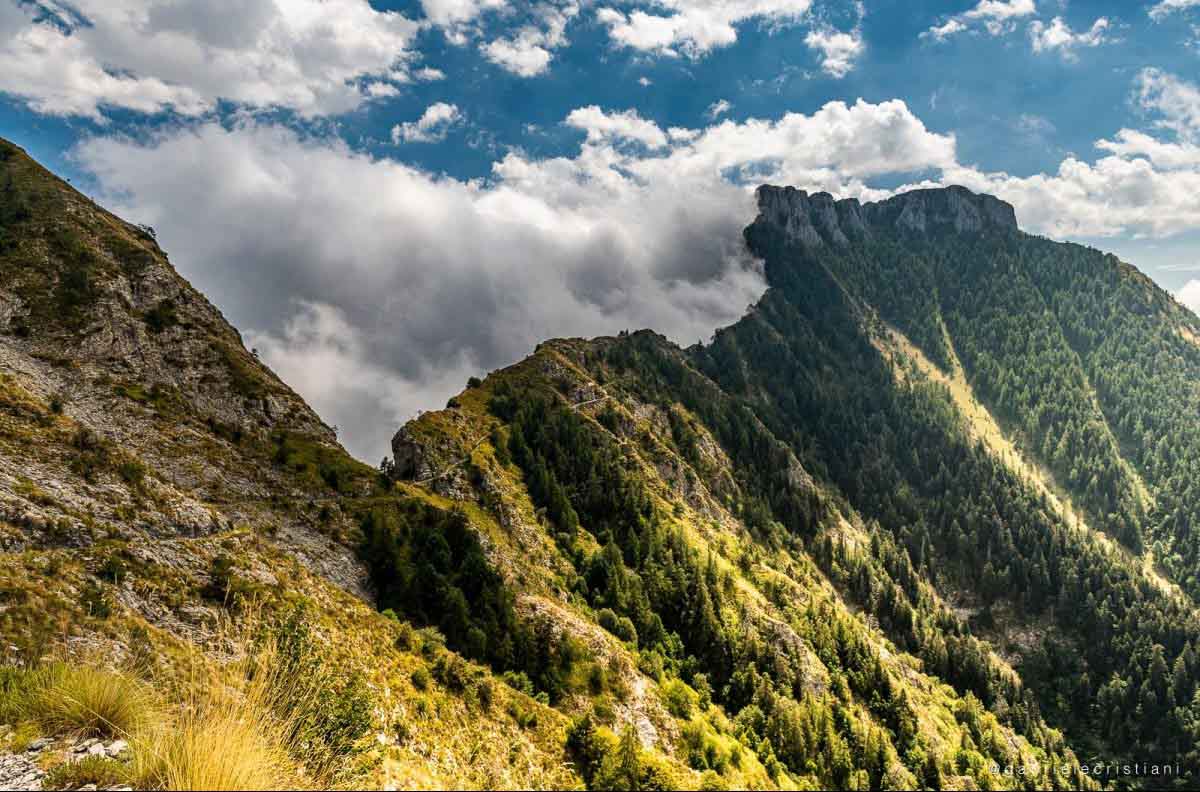
The park opened in 2007 and stretches over an area of 60 square km between Monte Saccarello in the north and Monte Toraggio in the south. It protects some oft he most beautiful and important landscapes in the Ligurian Alps, home to a large variety of animals and plants.
Along the Via Alpina are four entrances opening into the park, which enjoys stunning views over the sea.
The close proximity of the Mediterrean sea and Alpine mountains and the shift from coastal to Alpine climate creates a number of different micro climates on a relatively small space. The area accommodates an impressive number of divers plants and animals, some of which are in danger of extinction. In this unique constellation of climates Mediterranean orchides co-exist next to gentian, cactus and rhododendron.

The park impresses with a number of surprises and natural highlights. There are natural caves being natural homes to bats, vast woodlands with large beech trees and pine forests with trees reaching up to 30 m high and underwood with wild herbs and flowers. The Alpine rocks and wide meadows are home to a variety of birds such as stone eagles, snow grouse as well as chamois and woolves.
If you would like to find out more about the regional nature reserve in the Ligurian Alps, please follow this link:
http://parconaturalealpiliguri.it
Or contact the office directly by phone or email.
info@parconaturalealpiliguri.it
Tel.: +39 0183 753384
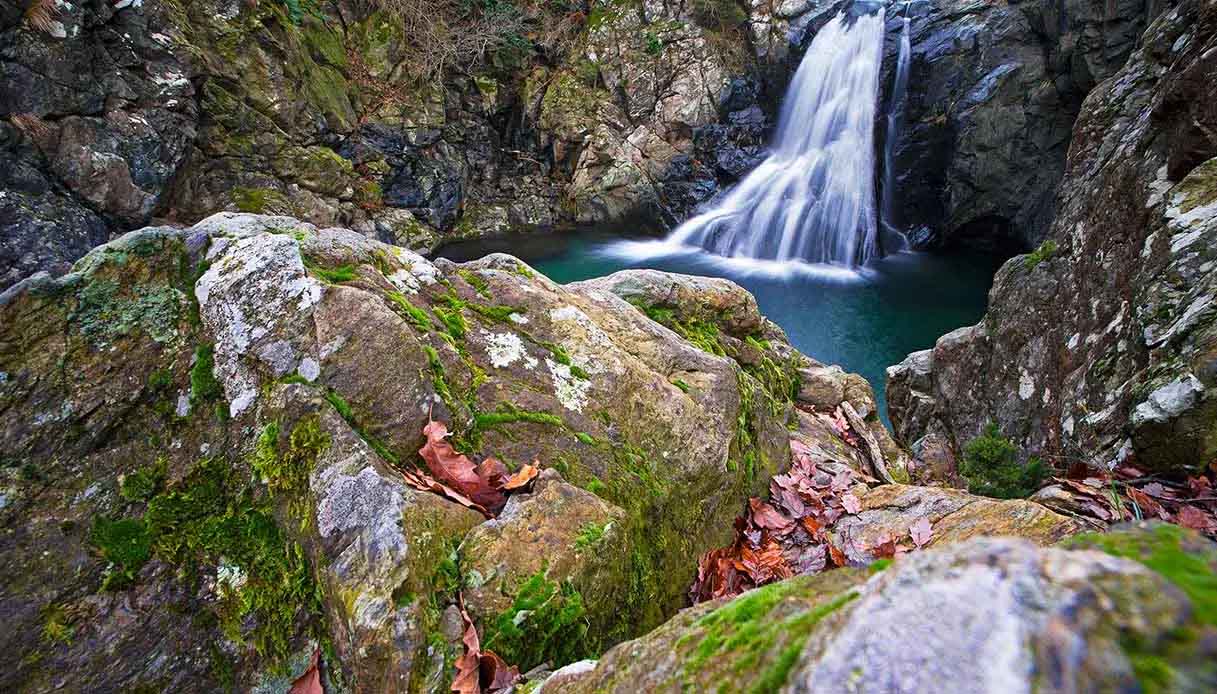
This the largest nature reserve in Liguria and plays an important role in the UNESCO network of Geo Parks reconstructing the geological history of Italy and the evolution of the Alps in relation to the Apennines. The parks’ overall 88 square km cover the area between Ponitvrea, Sassello and Varazze. It was named after the Monte Beigua, with 1287 m above sea level the highest of its mountains. The park was founded in 1995.
The area is known for its spectacular landscape and the vast variety of animals and plants. Alpine and subalpine biotopes only to be found in the Mediterranean climate find protection in the Beigua Park.
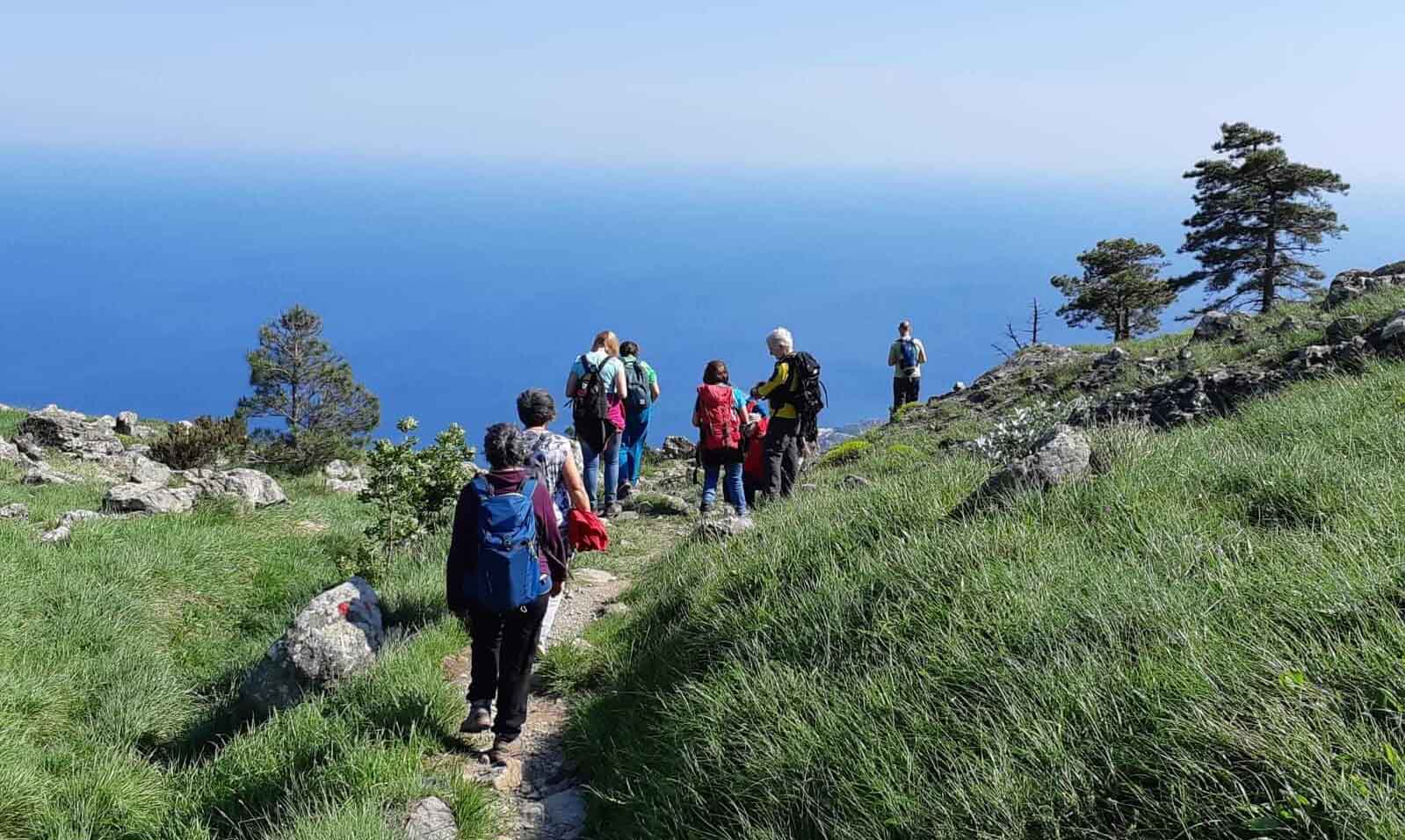
Hiking routes meander through the beautiful countryside and offer spectacular views over the sea, the surrounding nature and the Alps. The Monte Beigua awards with stunning views over most of Liguria and on clear days all the way to Corsica.
Parco Beigua fascinates with a versatile landscape with an uncountable number of streams and waterfalls cascading into the sea from breath-taking cliffs. One can easily spend entire days walking through the woodland under the multi coloured leaves of the chestnut, beech and oak trees. A paradise for mushroom pickers!
An additional highlight are the excavations from the neolithic era outside the village Alpicella, the fossilised coral reefs near the Faiallo pass in the east. A cultural magnet is the Badia di Tiglieto – the first Cistercian abbey outside France, built around 1120 BC.
For more information on the Parco Beigua, please follow this link:
http://www.parcobeigua.it
Or by email or phone:
info@parcobeigua.it
Tel. +39 019 4512050
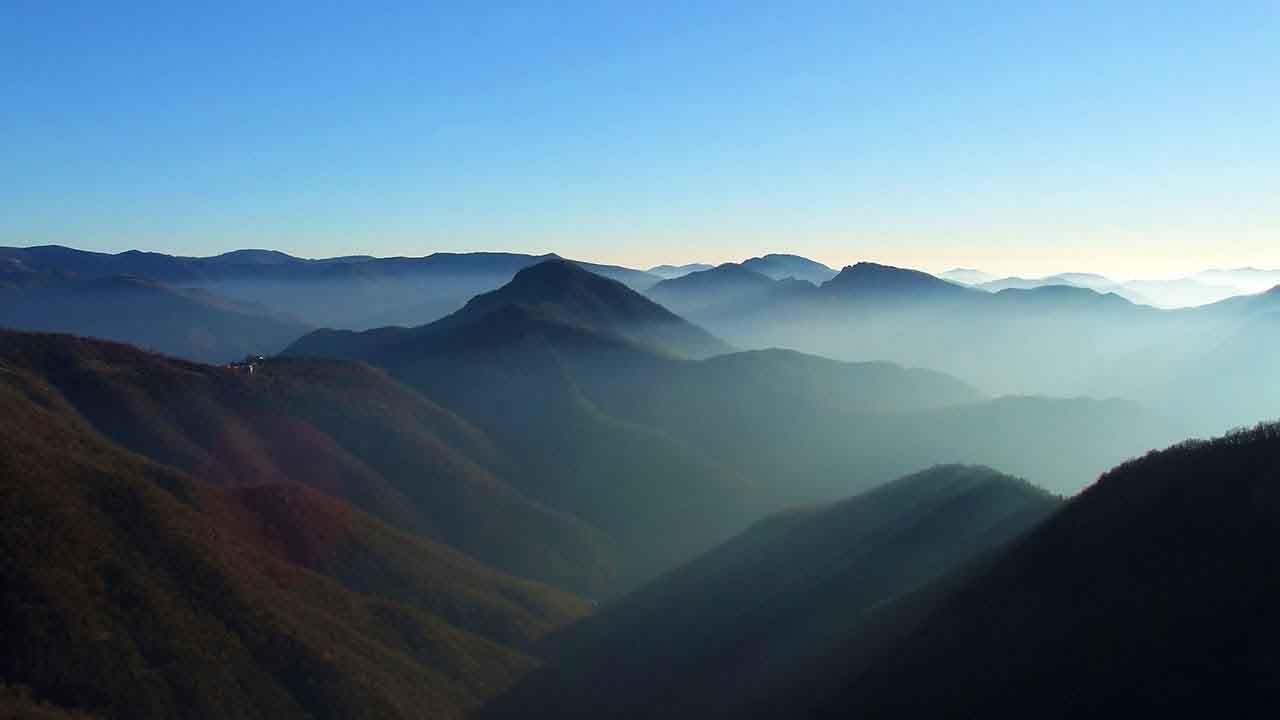
The Antola Park near Genova measures some 48 square km across the valleys of Scrivia and Trebbia. It was founded as a natural park in 1995 and is one of the most beautiful areas in the Genovesian hinterland. The landscape varies from valleys, hilltops, woodland to meadows, clearings, mountain streams and lakes. The Antola summit towers over the “Parco”, which is regarded as a cultural, historical and architectural heritage.
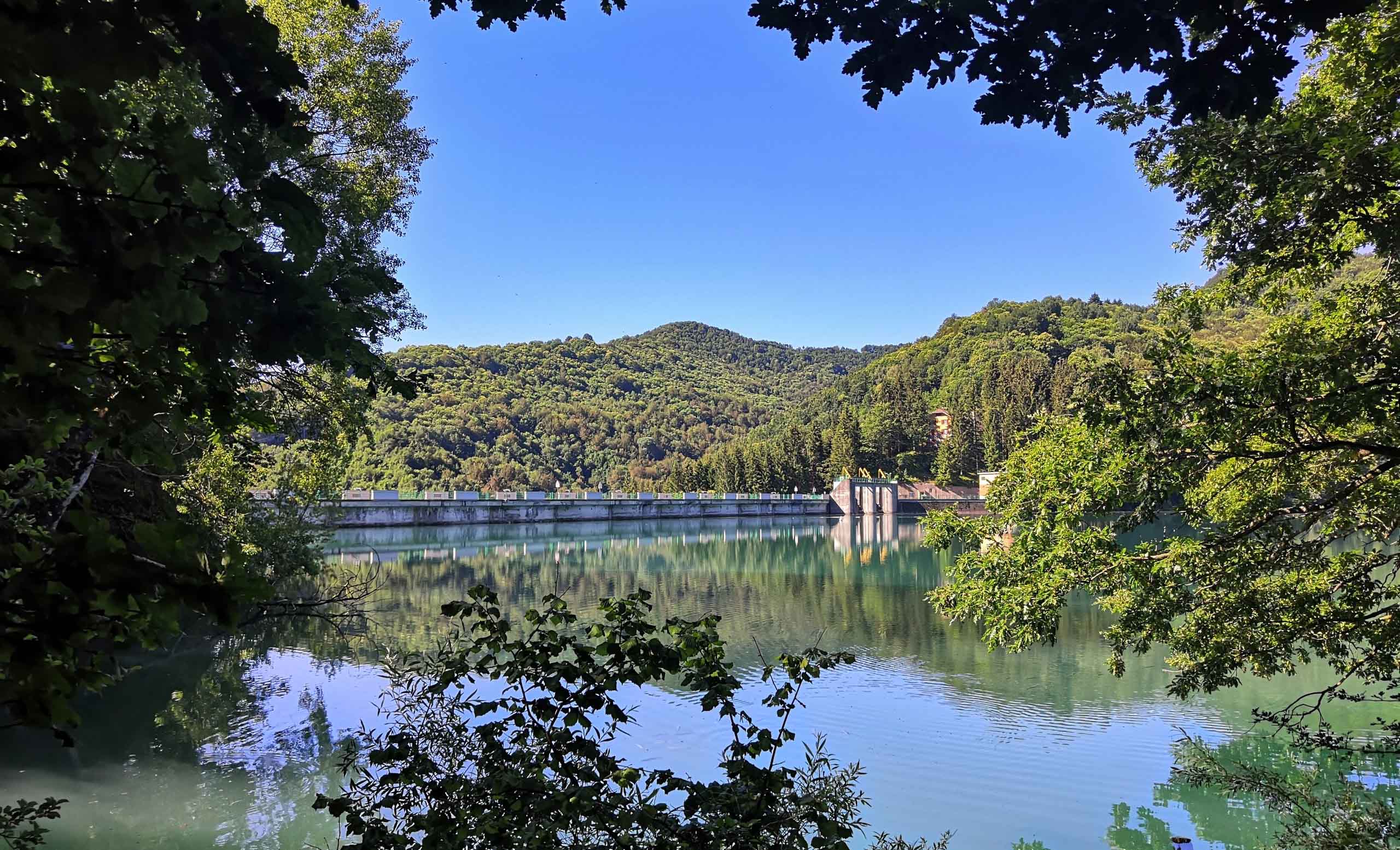
Right in the middle of the Antola natural park and at the foot of the Monte Antola lies the Brugneto lake. It is a large elongated and beautiful water reservoir and at this time of the year surrounded by trees with their yellow, orange, green and red foliage. In contrast, the water shimmers in smaragd green and is as calm as a mirror.
Monte Antola measuring 1597 m above sea level is the highest peak in the natural park and known for its slopes covered in colourful blossoms. There are daffodils, orchids, gentian, lilies, buttercups adorning the sloping hillside and the summit is a popular destination for hikers.
For more information on Parco Antola, please follow this link:
http://www.parcoantola.it
protocol@parcoantola.it
Tel. +39 010 9761014
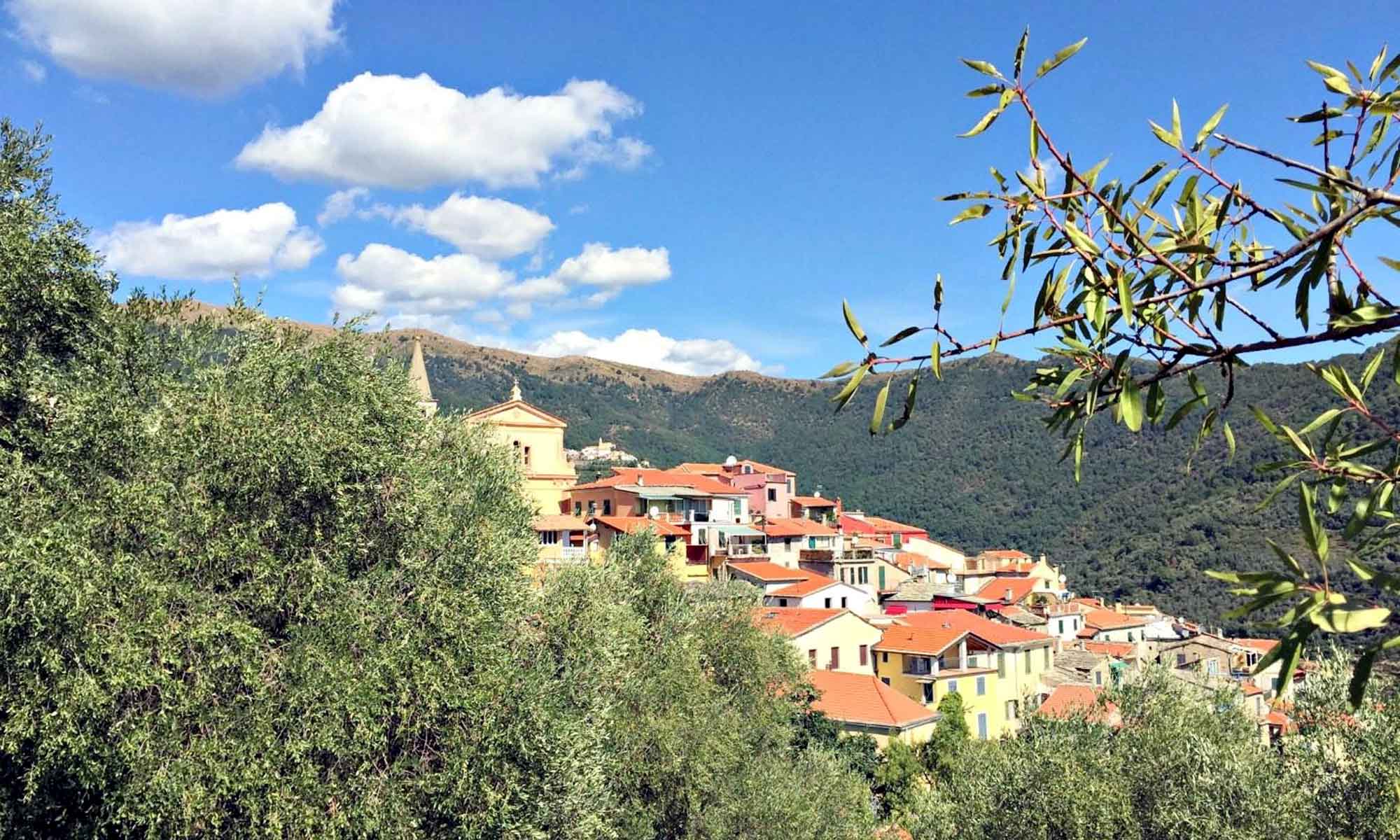
There is a cultural highlight awaiting in the hinterland of Imperia that is worth visiting in the autumn. On the way to the old mountain village Valloria (Latin for “the golden valley”), the path meanders through vineyards, cypresses and pine forests, olive groves and bay leaf trees. The village lies some 20 km away from Imperia and each year attracts artists from all over Italy who come to leave their mark on the village.
It’s not always been like this. In the 1980-ies Valloria was in danger of becoming lost and forlorn. The young villagers moved to the urban centres and the old were left behind. Here and there tourists purchased a few properties but it was not enough to rejuvenate the village.
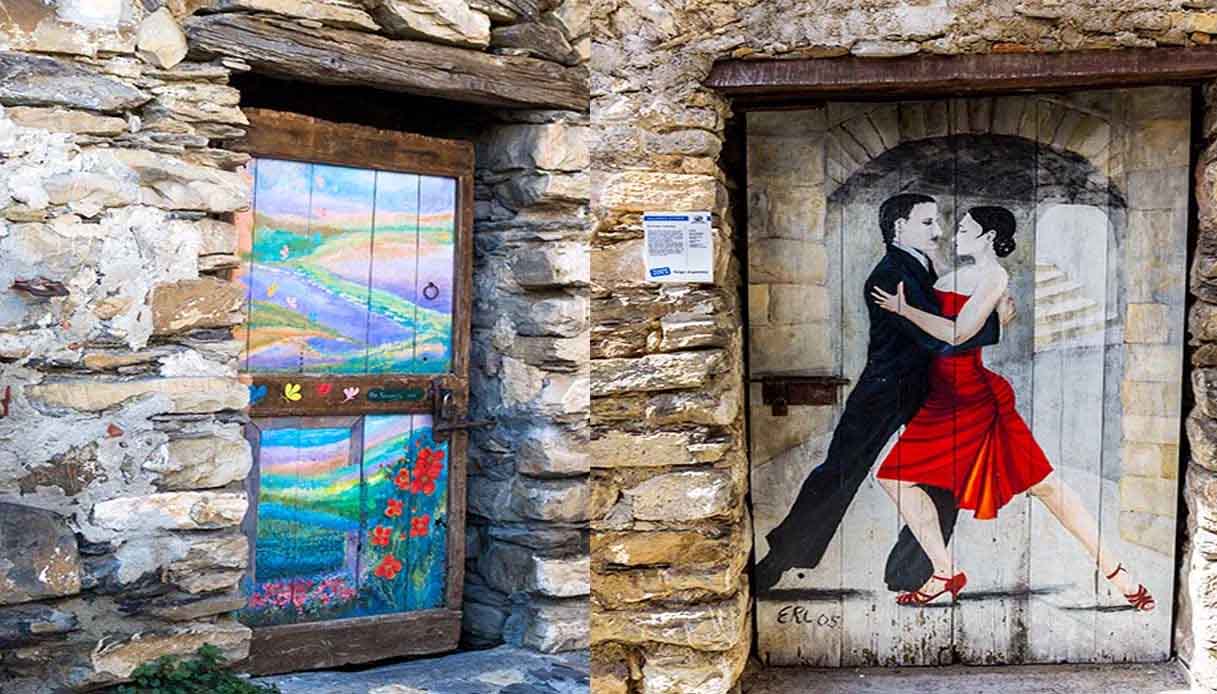
In the early 90-ies a few of the Valloriesi who had moved away, founded the club of the “Amici di Valloria” with the aim to bring new life to the village. They created an annual village fete and among other guests, they invited artists and asked them to decorate the doors of the village houses with their pieces of art. The initiative became increasingly popular and to this day, artists from all over Italy come and adorn the doors with their paintings.
Today the “open air gallery” counts 170 painted doors and Vallori has been given the name “Il paese delle porte dipinte” which translates into “The village with the painted doors”. By now the village has run out of unpainted doors and for a few years the house walls have been included in this unique art project. The mountain village is known all over Italy and well known for its outdoor gallery. Every visitor is welcome to enjoy these pieces of art – particularly at night when the doors are illuminated.
For more information on Valloria and the artful doors, please follow this link:
https://charmingplaces.de/geheimtipp-valloria-ligurien/
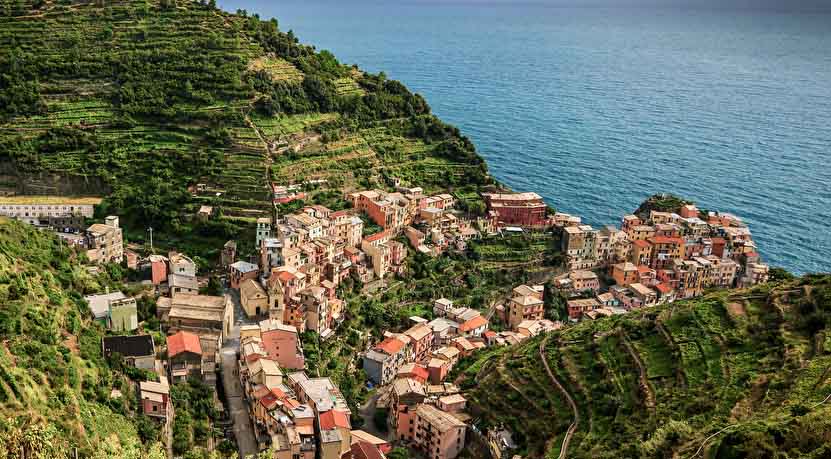
Autumn is harvest season – also for wine. The Ligurian wine tradition dates way back to pre-Christian times.
Liguria is internationally hardly known as a wine region which is due to the fact that with 1,600 ha stretching over a coastline of 350 km it is the second smallest wine region in Italy. The vineyards grow along the steep and rocky cliffs and although very beautiful to look at, the cultivation is carried out under challenging conditions.
Wine is grown mainly along the border to France in the region of Dolceacqua, Pomassio and Riviera Ligure di Ponente and then again around Genova in the DOP Val Polcevera and the Golfo del Tigullio-Portofino and in the direction towards Tuscany in Cinque Terre, Colli di Lui and Colline di Levanto.
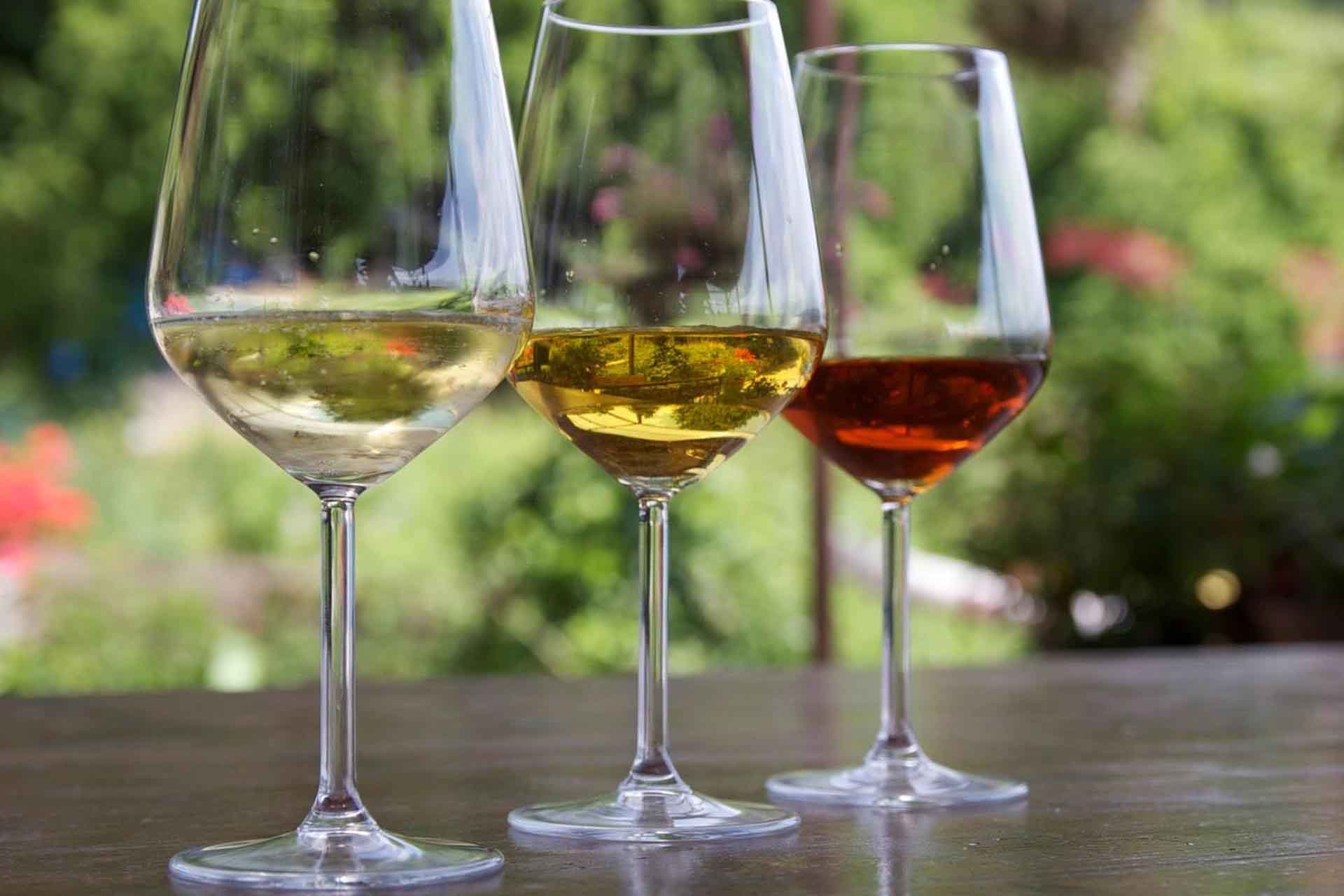
Some 4000 mainly small wineries grow the regional and internationally hardly known grapes resulting in some 65,000 ha Ligurian wine produced each year and sold in this region. Yet, wines produced in Liguria are not necessarily cheaper in price because the production is very labour intensive.
A number of Ligurian wines exceed the status of table wines and can be tasted directly at the winery or in local restaurants.
Some 40% of white wines come from the Vermentino grape with a delicate fruity note, which is sometimes rounded off with Trebbiano or Malvasia. The best red wines originate from the area surrounding Riviera Ligure di Ponente and feature the Ormeasco variant which is a local version of Dolcetto or Rossese. Both wines are fruity, spicy and rustique. A very rare wine of this area is the Sciacchetra from Cinque Terre. This is a traditional dessert wine made from dried grapes which are not to be harvested before the 1st of November.
And to further trigger your interest in Ligurian wines, we would like to introduce you to a few wines typical for this region: Ligurian wines
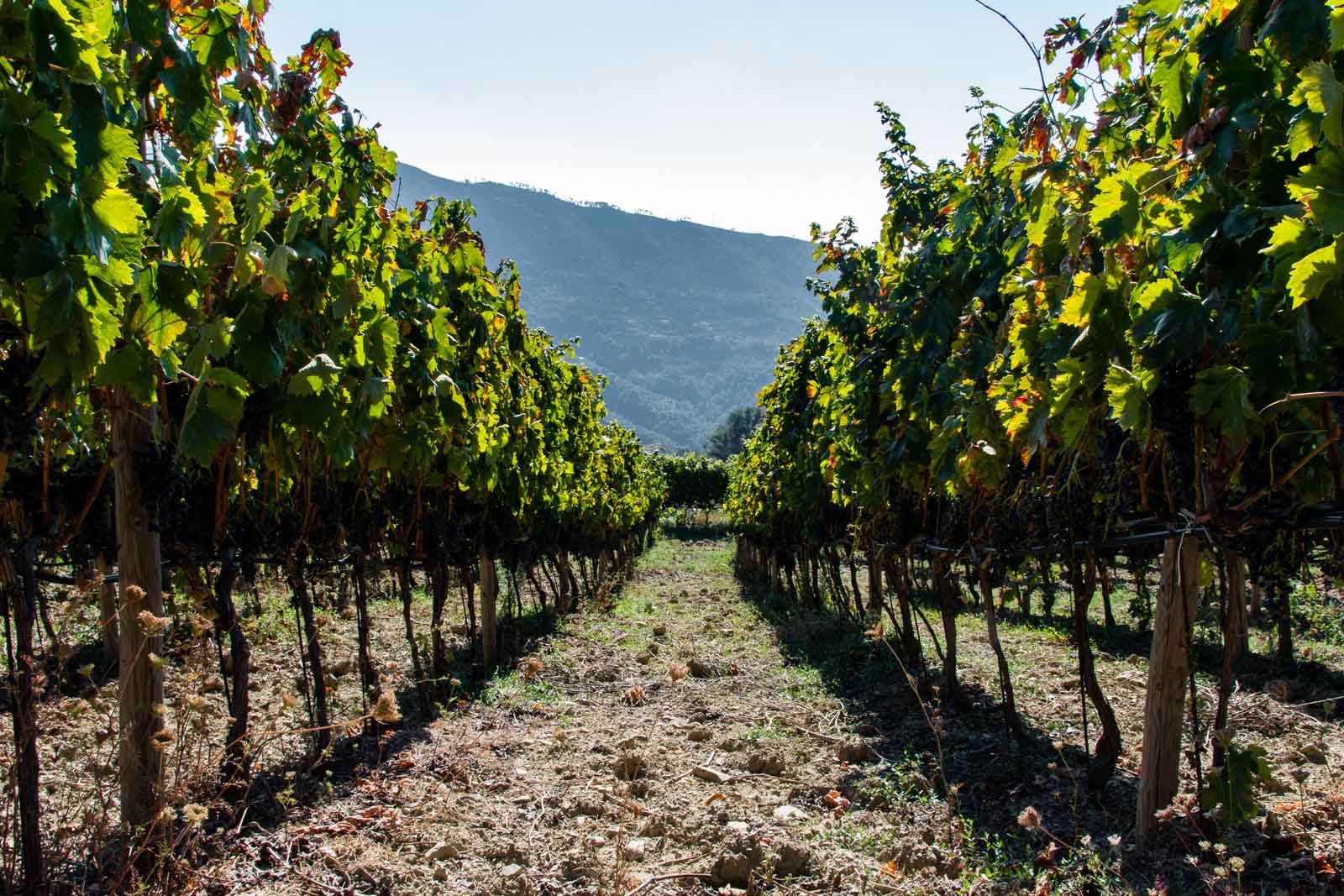
Some wineries open their doors for wine connoisseurs to guided tours and wine tastings. Surrounded by beautiful landscape you will hear more about the traditions, philosophy and culture behind Ligurian wines and learn how it is cultivated and produced. With this newsletter we will give you a few recommendations on where to attend good wine tastings.
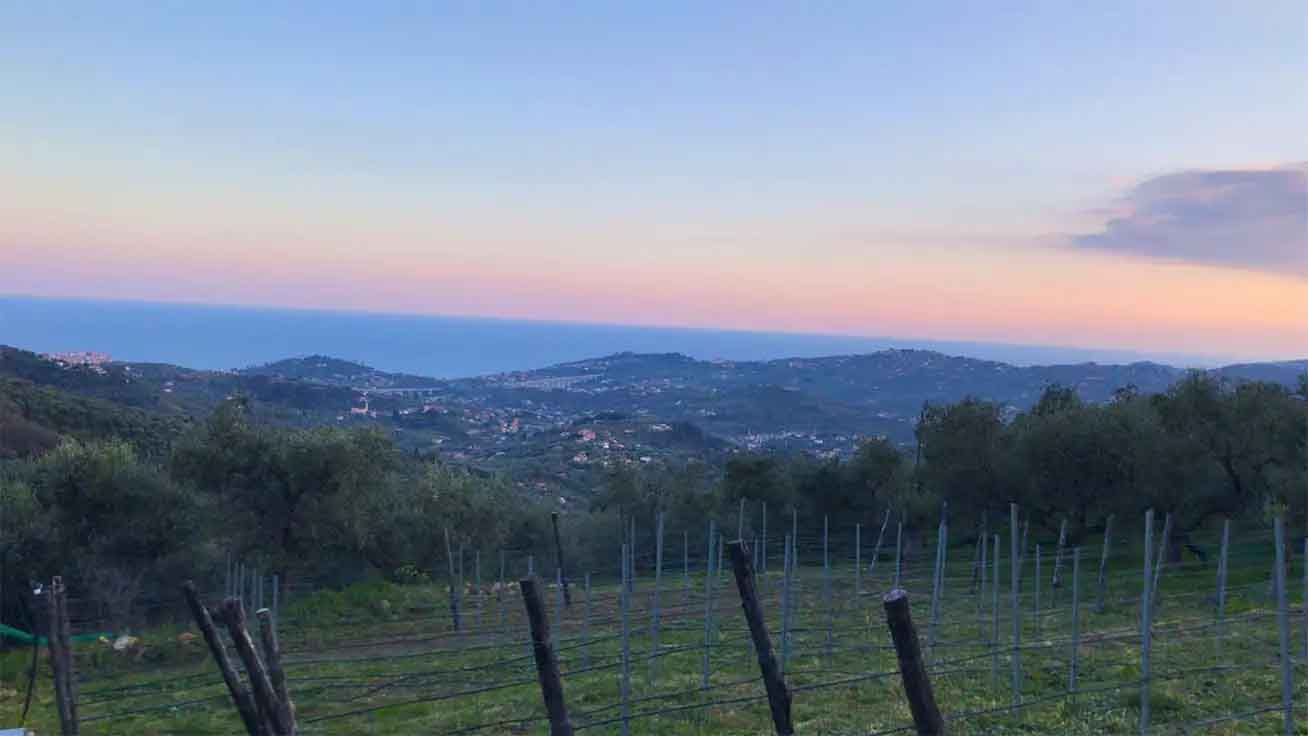
Nestling in the mountains behind Imperia lies the 3.5 ha winery Vis Amoris where seven varieties of the Pigato are being produced. The winemaker invites his visitors on an interesting guided tour through the vineyards and into the wine cellar whilst explaining the art of classic winemaking and maceration of the skins. Part of the tour is a wine tasing accompanied by olives and focaccia.
Infos http://visamoris.it/
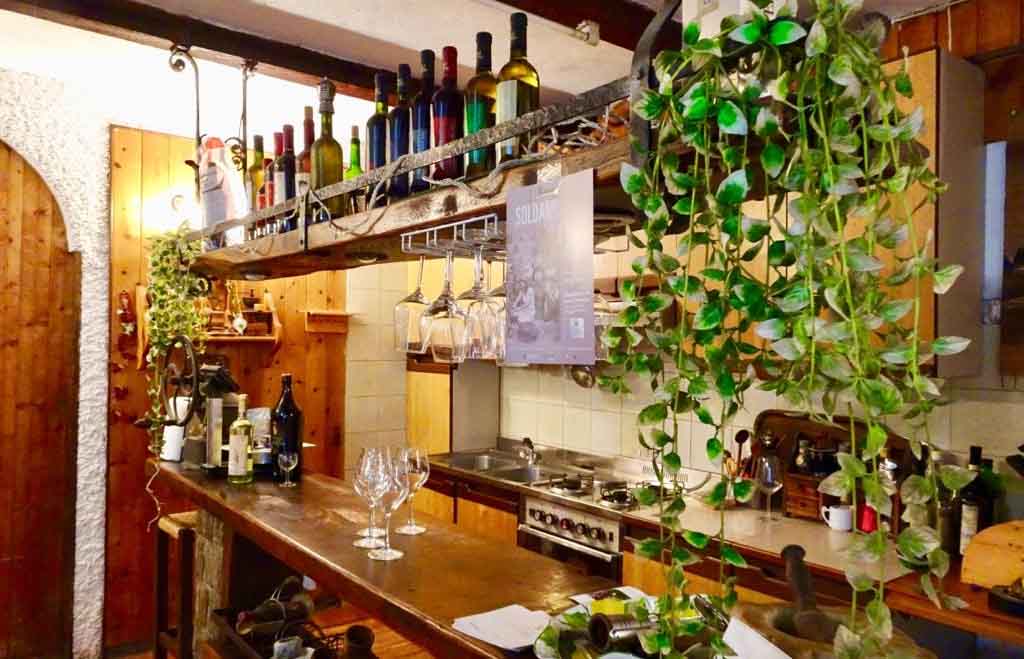
The farmhouse Poggi dell’Elmo specialises in the production of the Rossese di Dolceacqua. With views over the Crosia Valley and the sea the wine tasting includes a welcome drink of a basic Rossese, a Rossese Superiore and a Vermentino and/or a Rosetto.
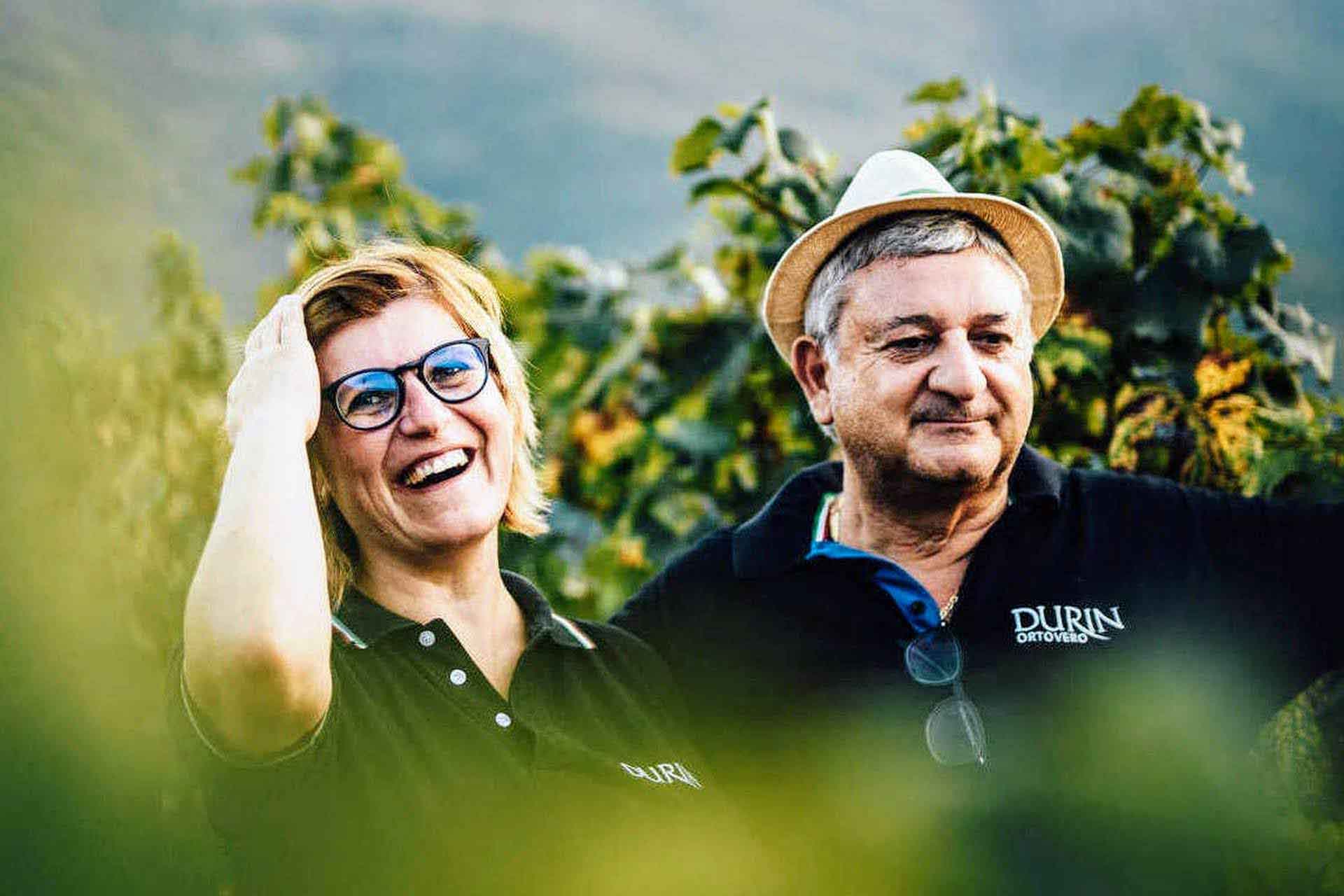
The winemaker Durin invites visitors on a tour around the winery and offers 5 different wines for tasting: two red wines, two white wines and a Passito to accompany local produce such as Coppa and cheese. Upon request it is also possible to visit the Toirana caves where the Basura sparkling wines are kept whilst maturing.
Infos https://www.durin.it
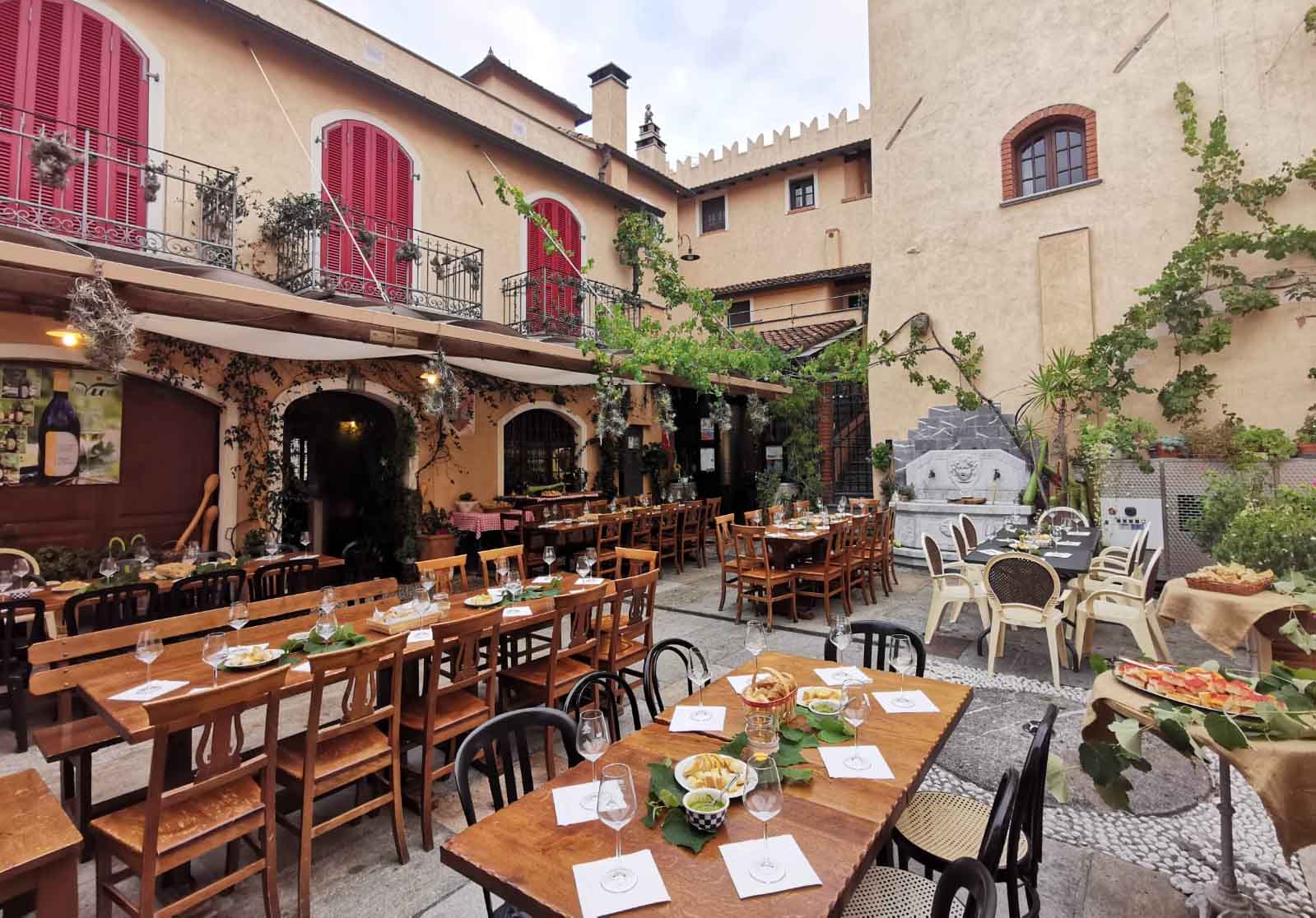
With the Vio family you will be introduced to the passion of wine making in the medieval village of Bastia d’Albenga. You will be taken on a tour of the vineyards where Vermentino, Amasco and Ranzo is being cultivated and invited to try the wines such as Pigato, Vermentino, Granaccia and Rossese di Dolceacqua.
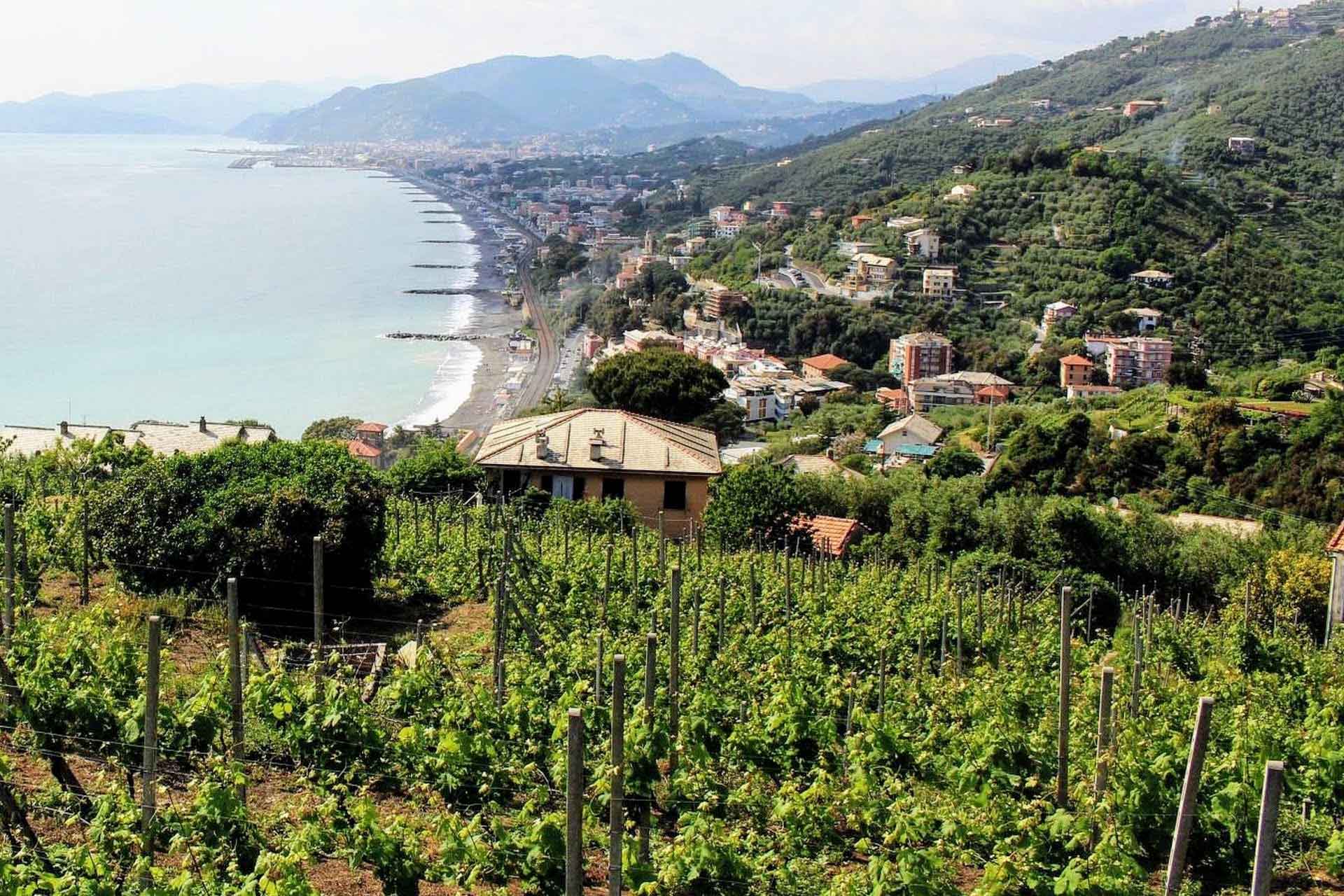
Cantine Bregante in Sant’Anna in Sestri is a traditional family business which for generations has passionately produced wine in this area. Here you will learn more about the history of the winery and on an excursion to the bay of silence you will be invited to try wines such as Vermentino Bianchetta, Bianco di Portofino, Ciliegiolo, Moscato and Passito Naturale.
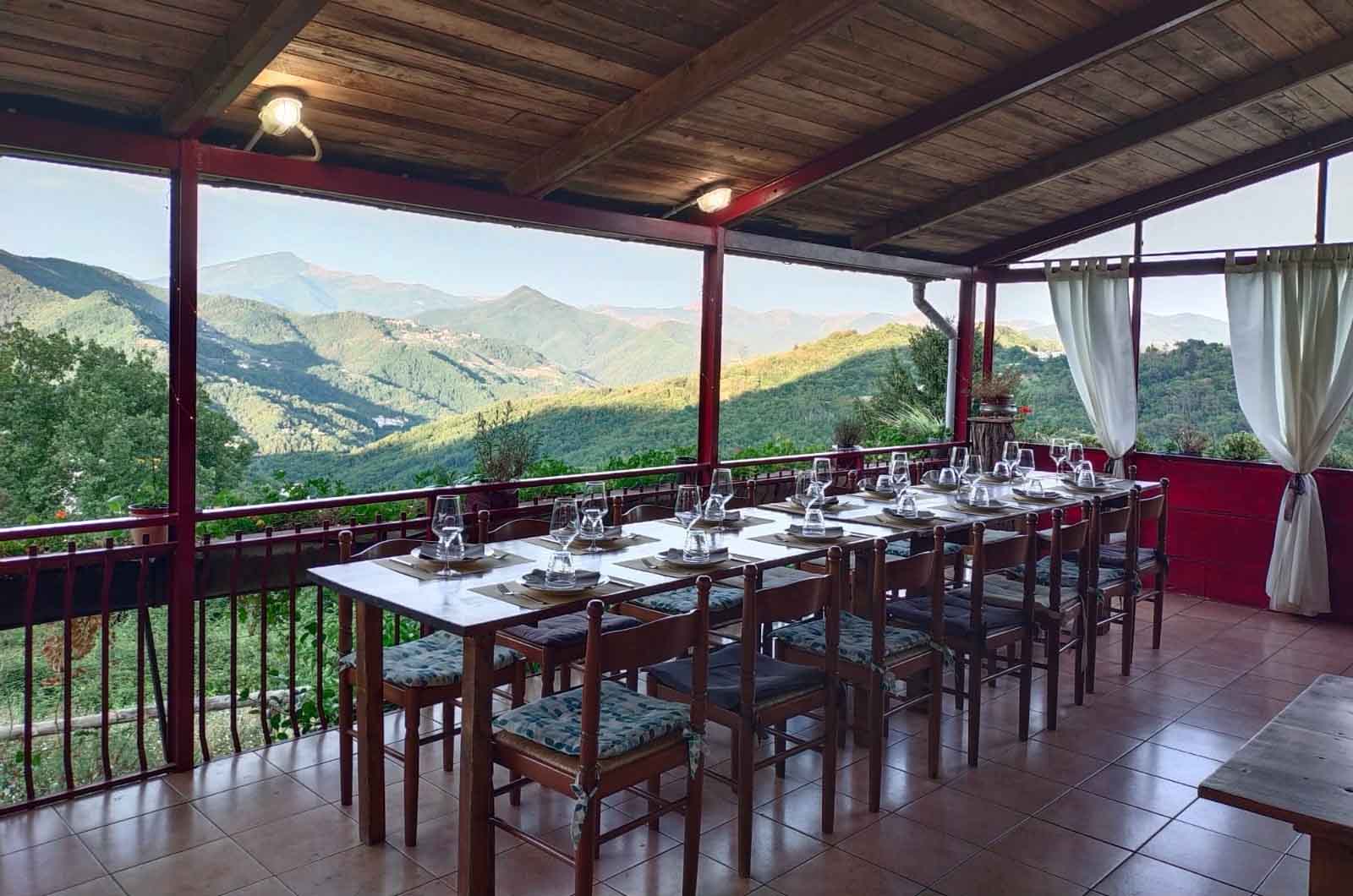
U Cantin is located in the rolling hills of the magically beautiful Genovan hinterland, nestling among woodland and vineyards. Here you can taste wines made from the original Cimixia grapes. Along with white wines such as Garmin, Sente or Passito Maccaia you can savour traditional Ligurian dishes.
Infos https://www.facebook.com/profile.php?id=100063787051046
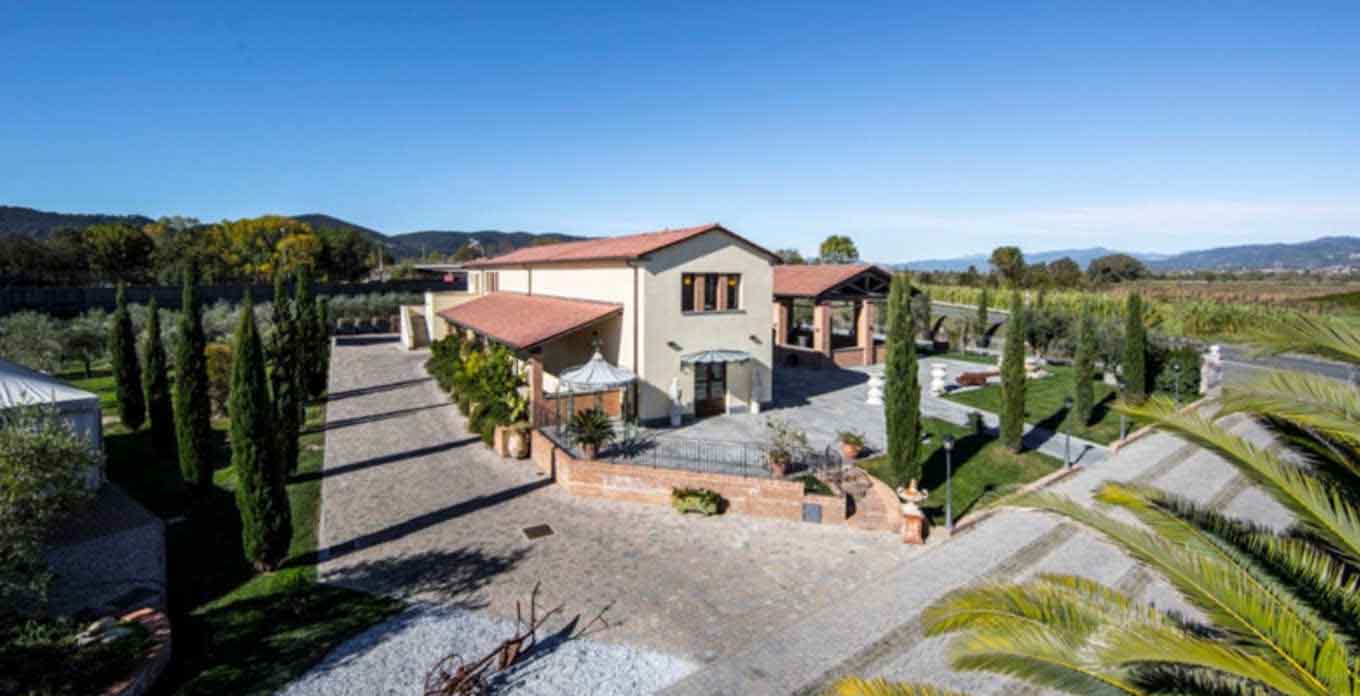
Not far from the archeological site of Luni lies the Baia del Sole of the Federici Family and the vineyards of the well known Vermetino, which can be tasted in the Baia del Sole. On the guided tour of the vineyards you will be introduced to all the steps along the production process and the wine cellar which was built following bio architectural principles.

Wine lovers have the opportunity to visit the winery Ottaviano Lambruschi in the medieval village Castelnuovo Magra. The tour will meander through the vineyards of Costa Marina surrounded by a uniquely beautiful landscape. The wine tasting of three Vermentini varieties, Vermentino DOP, Il Maggiore and Costa Marina is accompanied by local produce.
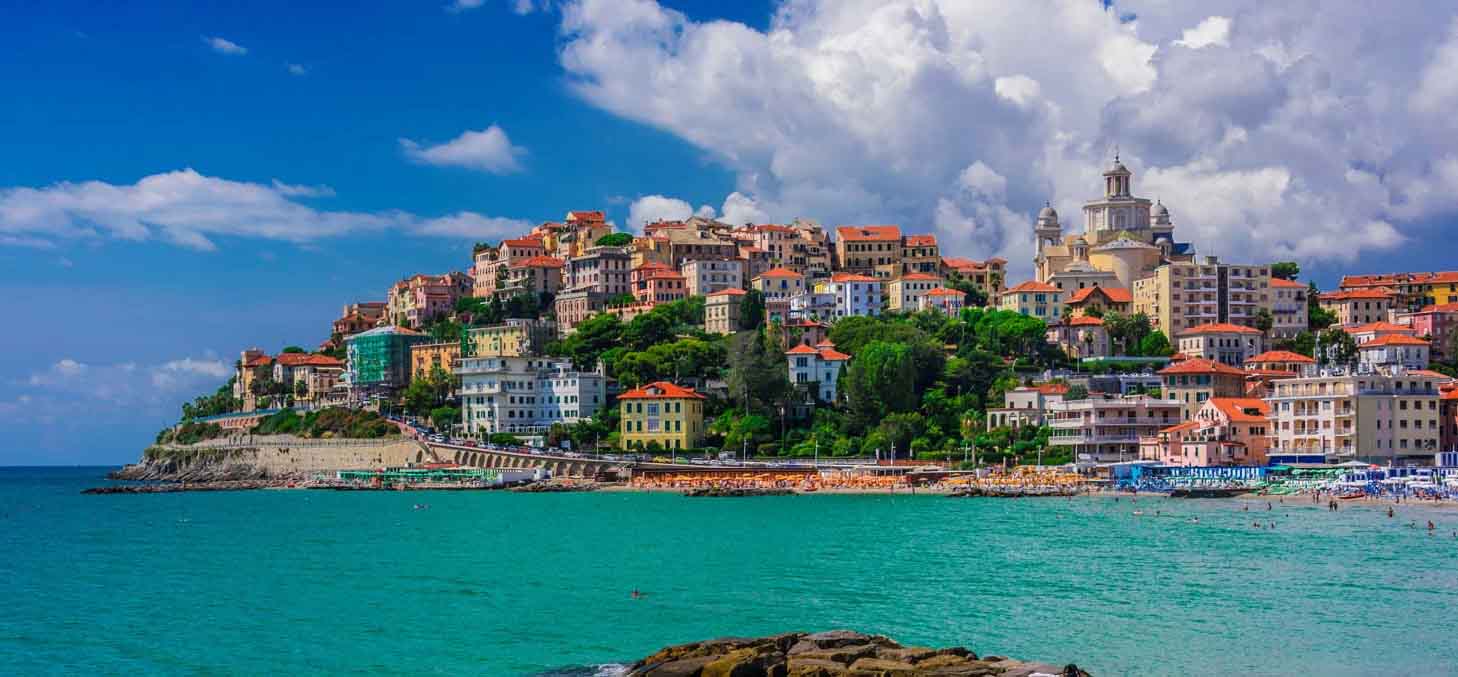
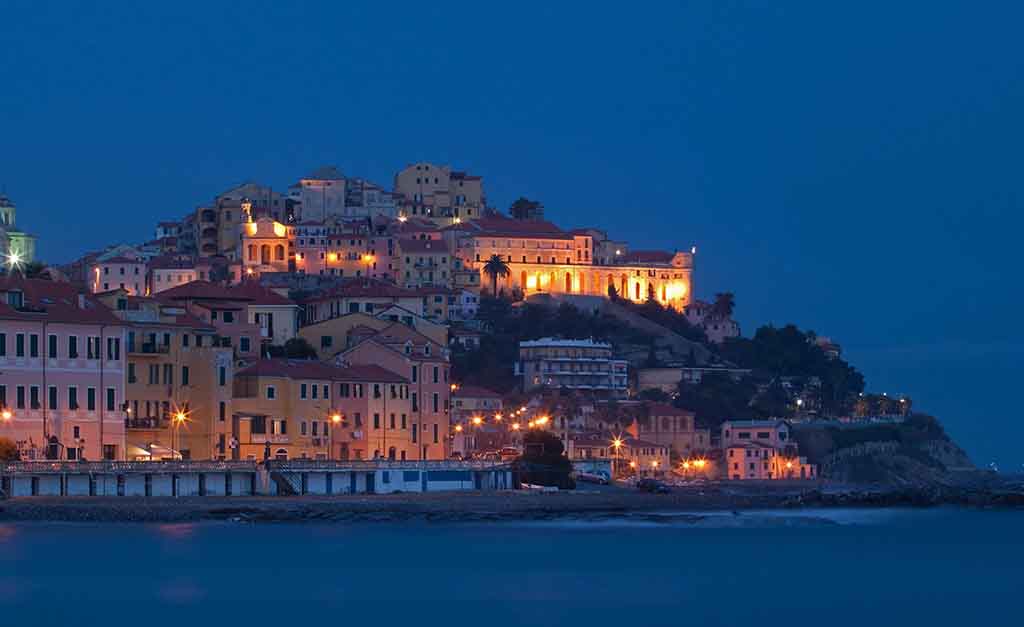
A Story of two rivalling Cities coming together
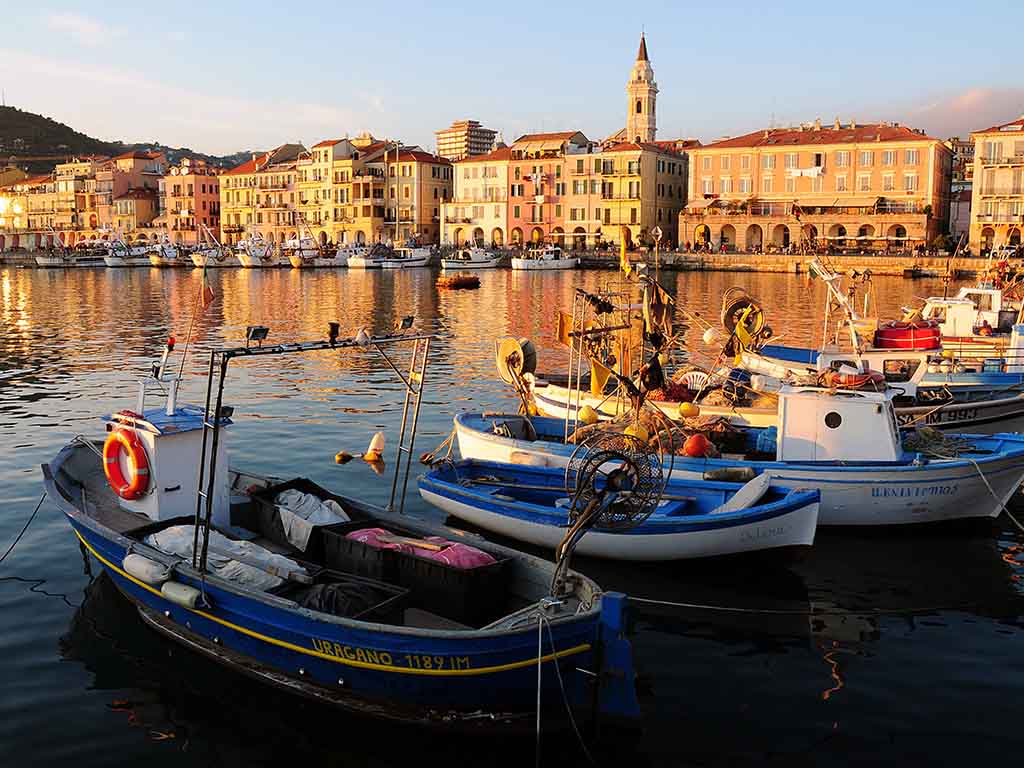
Imperia is situated on the west coast of the Ligurian Riviera of flowers and with a population of 43,000 it is the capital of the region. The name originates from the river Impero which marks the natural border between the two major parts of the city, Oneglia and Porto Maurizio. A number of smaller surrounding villages were suburbanised back in 1923 as part of the official unification.
Oneglia with its industrial harbour and food industry is situated in the east of the town and the modern part of town. The old Porto Maurizio and Marina in the west of Imperia is home to a number of monumental historic buildings and narrow mews. Fishing and tourism used to dominate the character of this part of town, now the service sector has taken over.
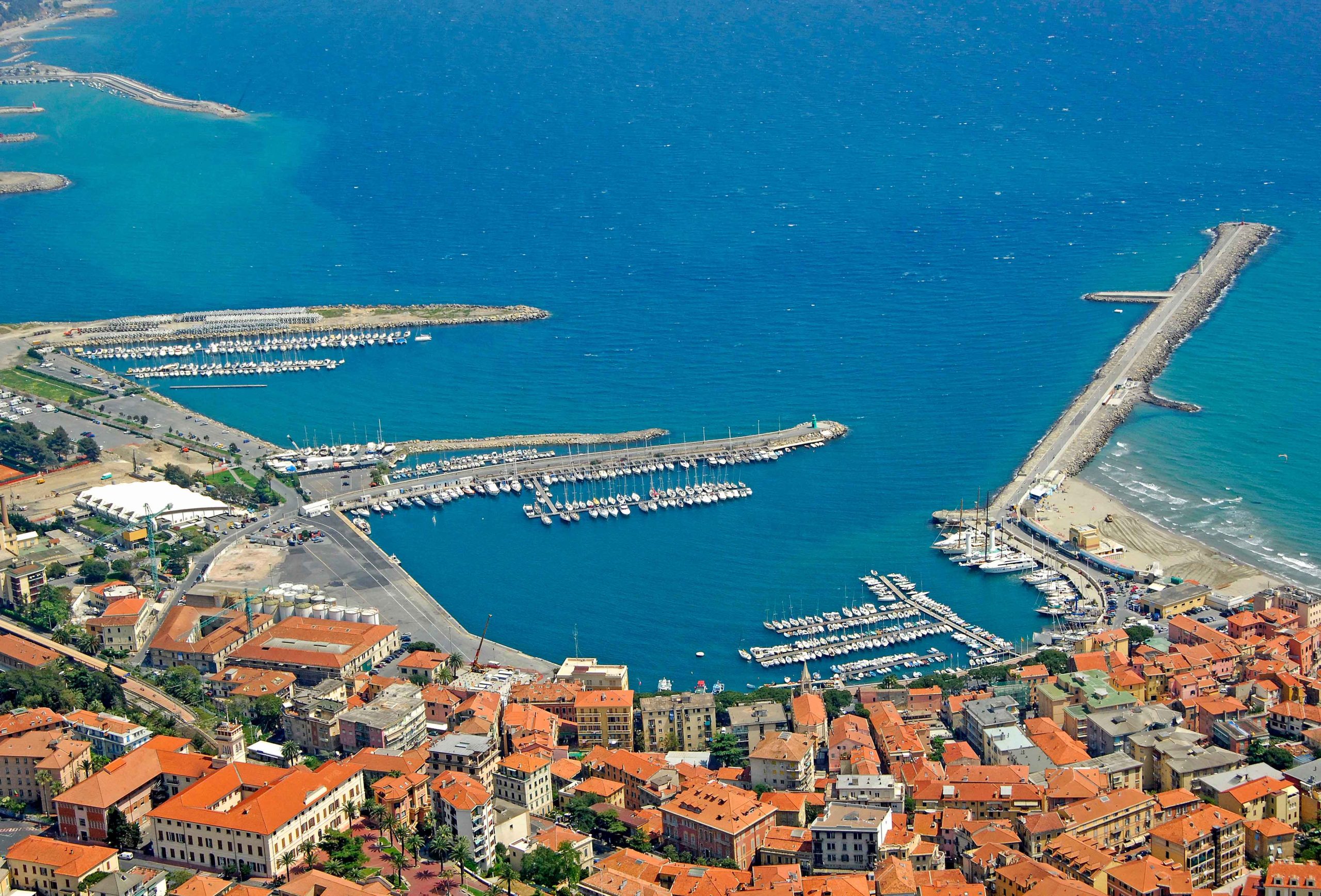
Porto Maurizio and Oneglia date back to medieval times when they were two independent towns in fierce competition with each other. Both towns were competing on commercial grounds and belonged to different administrations. Oneglia was loyal to Genova and Porto Maurizio was under the ownership of the Savoyen family. In medieval times Porto Maurizio was an important business and trade centre and Oneglia fell under the control of the Albenga bishops back in the 11th century.
A deep sense of distrust and rivalry developed right in the heart of Imperia.
To this date Imperia has two historic centres, two townhouses, two churches, two harbours, two motorway junctions, two beaches and until recently two train stations. On the map and from an administrative point of view the town looks united but the two parts of town are still separated.
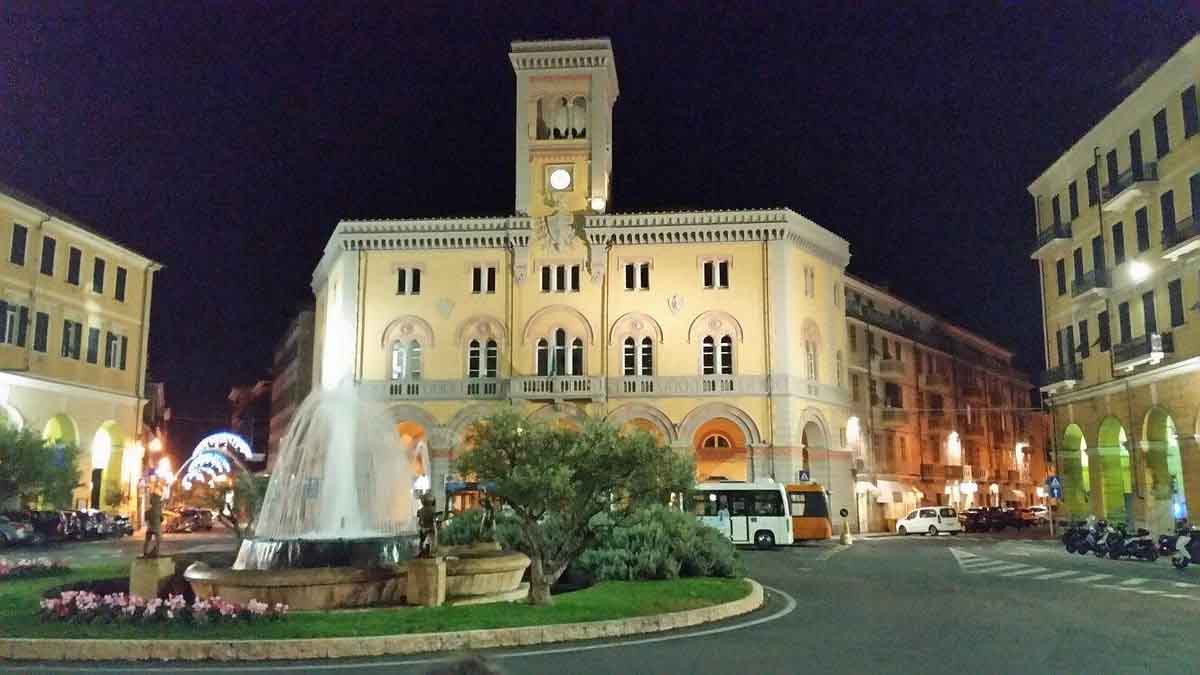
Nearly everything is different in the two parts of Imperia:
Architecture: Oneglia is a level town with a Piemont Structure; Porto Maurizio and its Parasio resembles a Ligurian village by the sea.
The squares: Oneglia has the Piazza Dante, Savoyen and a clocktower; Porto Maurizio has the Piazza Pagliari with the beautiful knight made of “risseu”, the typically Ligurian stones.
The churches: In Porto Maurizio stands the fabulous neoclassic Cathedral San Maurizio and one of the largest churches in Liguria; in Oneglia is the late baroque collegiate church San Giovanni Battista.
The language: The dialects spoken in both town parts show different lingual traces; a pizza with anchovies is called “Sardenaira” in Porto Maurizio and “Pissalandrea” in Oneglia.
The cuisine: One part of town prefers Farinata and the other prefers dried cod.
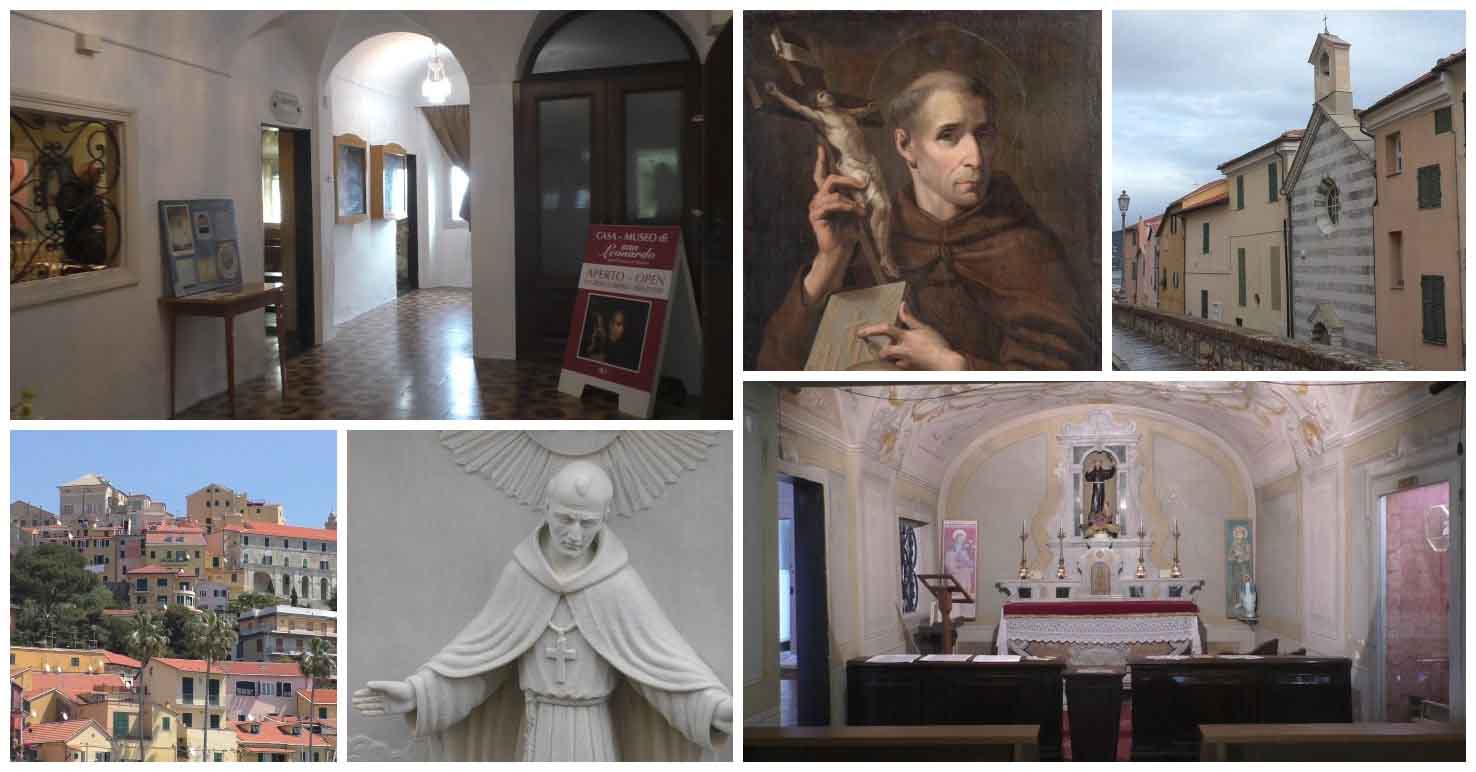
According to legend, merchants travelling from Porto Maurizio in the direction of their ally Genova, stopped in Diano Marina to shake off the last grains of sand in order to leave all Oneglia sand behind.
In short, if you live in Imperia you are one or the other. You are a “Cacelotti” (the porcini) or a “Ciantafurche” (the Onegliesi).
In 1923 all disputes were put aside and the two parts of town started living peacefully side by side. In order to pacify both sides, communal buildings such as the port office and townhall built in Victorian style were located right in the middle. They are surrounded by nothing else than palm trees and date trees and the big communal park of Imperia. Porto Maurizio ends just in front of it and Oneglia begins right behind it.
It took the former rivals as long as 1991 to mutually agree on a protective saint and they finally chose San Leonardo. But still, they will keep celebrating the martyr San Maurizio on 26th November and whereas each year on the 24th June there will be a memorable feast celebrating San Giovanni Battista.
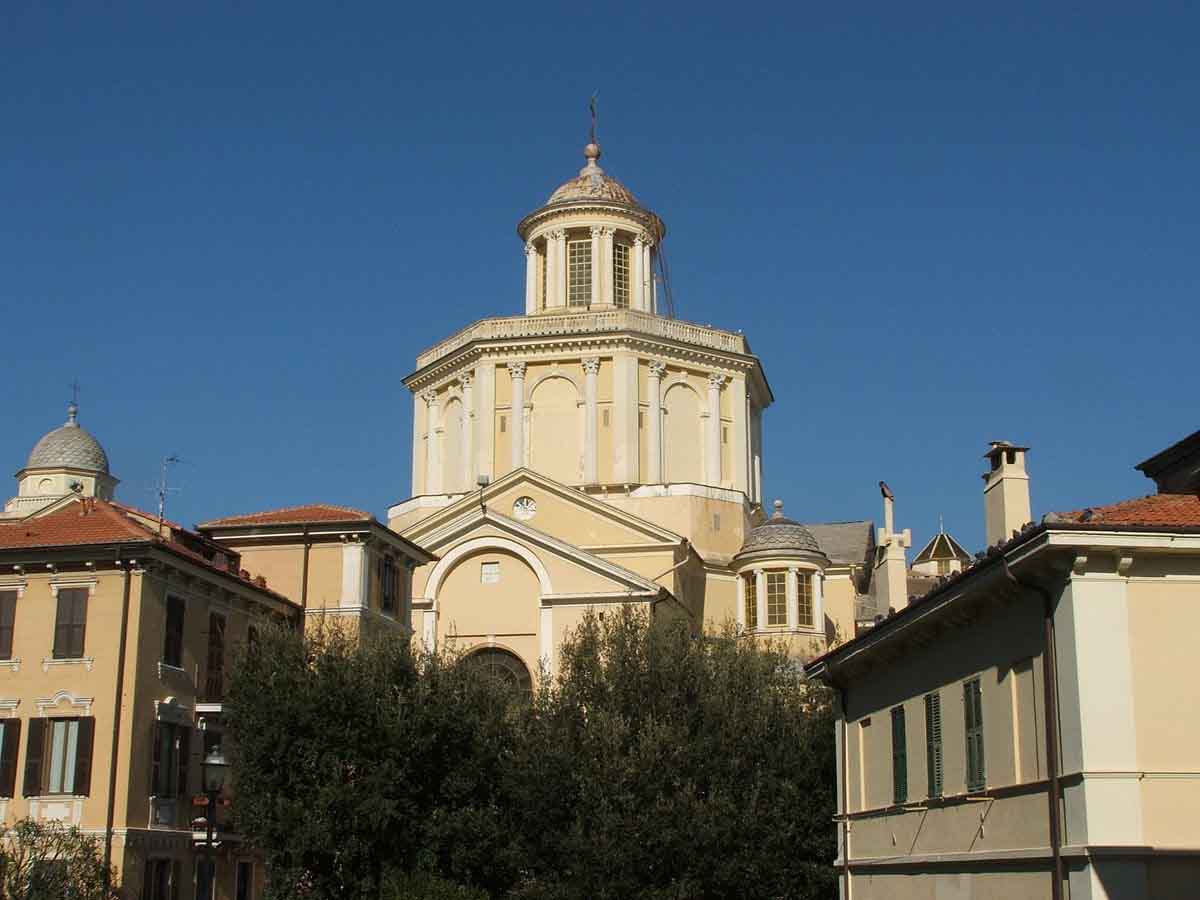
Imperia is worth a visit and has a number of sights to offer:
In Porto Maurizio there is the neoclassical Basilika San Maurizio. It is one of the largest churches in Liguria and was built in 1781-1832 by the architect Gaetano Cantone.
The old town on the hilltop Parasio is also worth visiting. The abbey “Santa Chiara” was founded in 1365 and the building standing on the site today dates back to 1741.
Oneglia’s harbour is another place of interest with its tightly built rows of houses, the long pier and the mix of fishing boats and luxury yachts.
The famous garden surrounding the Villa Grock is open to the public and the Museo dell’Olivia explains all there is to know about the subject of olives.
The church S. Giovanni Battista in Oneglia is the counterpart to the Basilica San Maurizio and was created 1739-1762 by the architect Gaetano Amoretti. The façade was built in 1832-1838.
Both town parts have beautiful beaches worth strolling along in mild autumn weather.
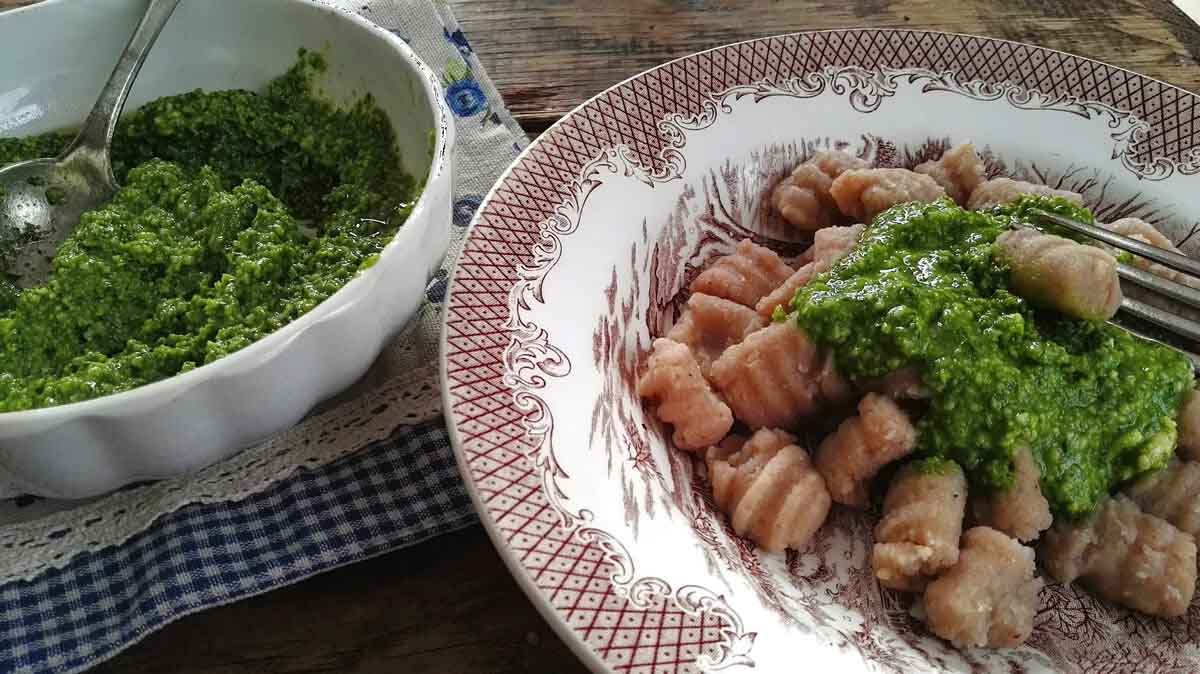
Here in Liguria, nature provides special produce ready to be made into some delicacy at any time of the year. Autumn is no exception.
One common fruit of the autumn is the sweet chestnut. When eaten raw it has a floury quality and when cooked, it develops a sweet aroma. It can be processed into flour which is then used for making bread, cake, Focaccia, Tagliatelle or Gnocchi if mixed with wheat flour. It is also used for making chestnut soup or chestnut beer.
Mushrooms are a much loved ingredient in the Ligurian cuisine. Porcini and so called “chestnut mushrooms” are often served alongside meat dishes or used for making sauces. A very popular main dish in Liguria is baked mushroom with potatoes served with Linguine and prawns.
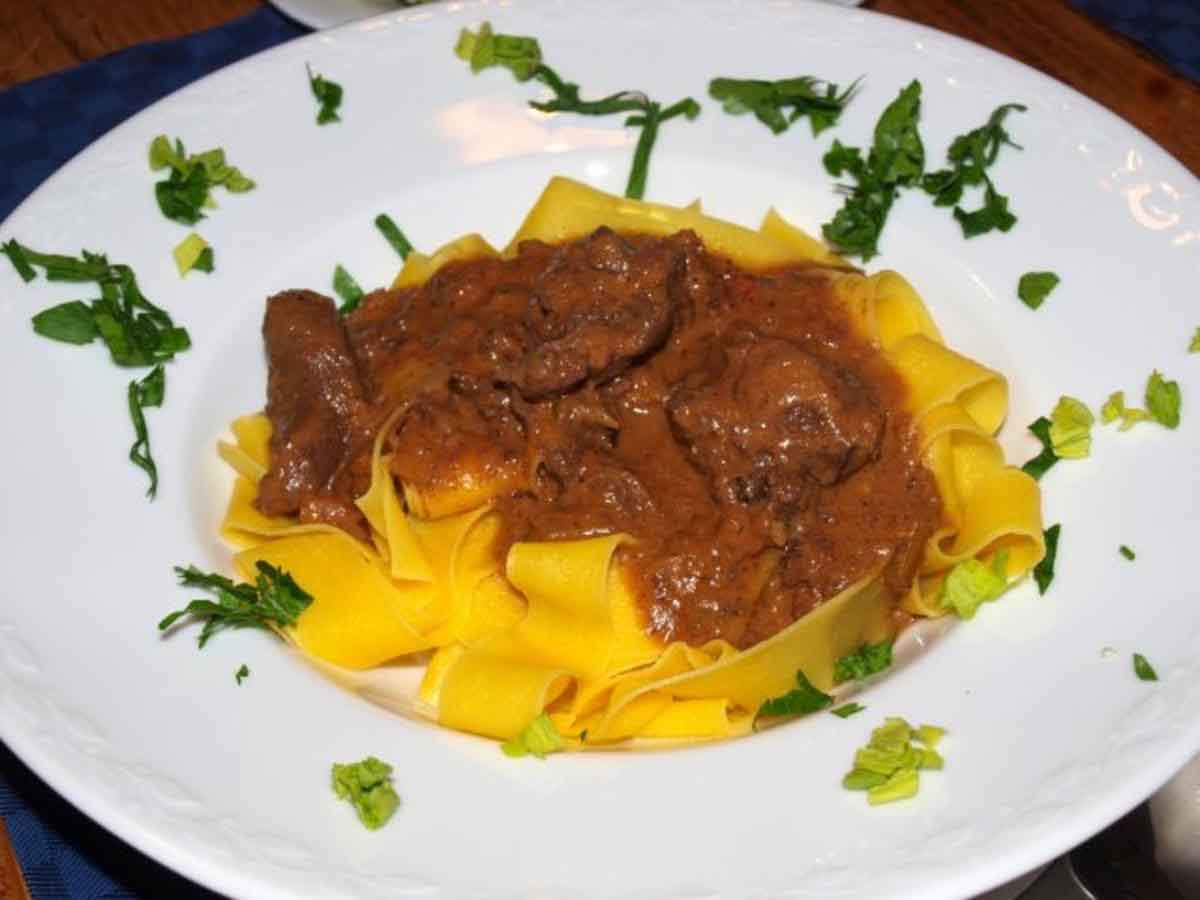
The pumpkin is of course also very popular in the Ligurian cuisine and turned into soup or as a filling for pasta or used as part of a risotto. There are also delicious desserts made of pumpkin such as Ligurian pumpkin cake.
Wild boar, rabbit and hare are popular in Liguria and one speciality is wild boar ragout with pasta (Parppardelle al ragu di cinghiale dalla Liguria). Also typical for this region is the “Coniglia alla Ligure”. The recipe for Ligurian rabbit, which is braised with pine kernels, black olives and herbs in white wine, comes from San Remo.
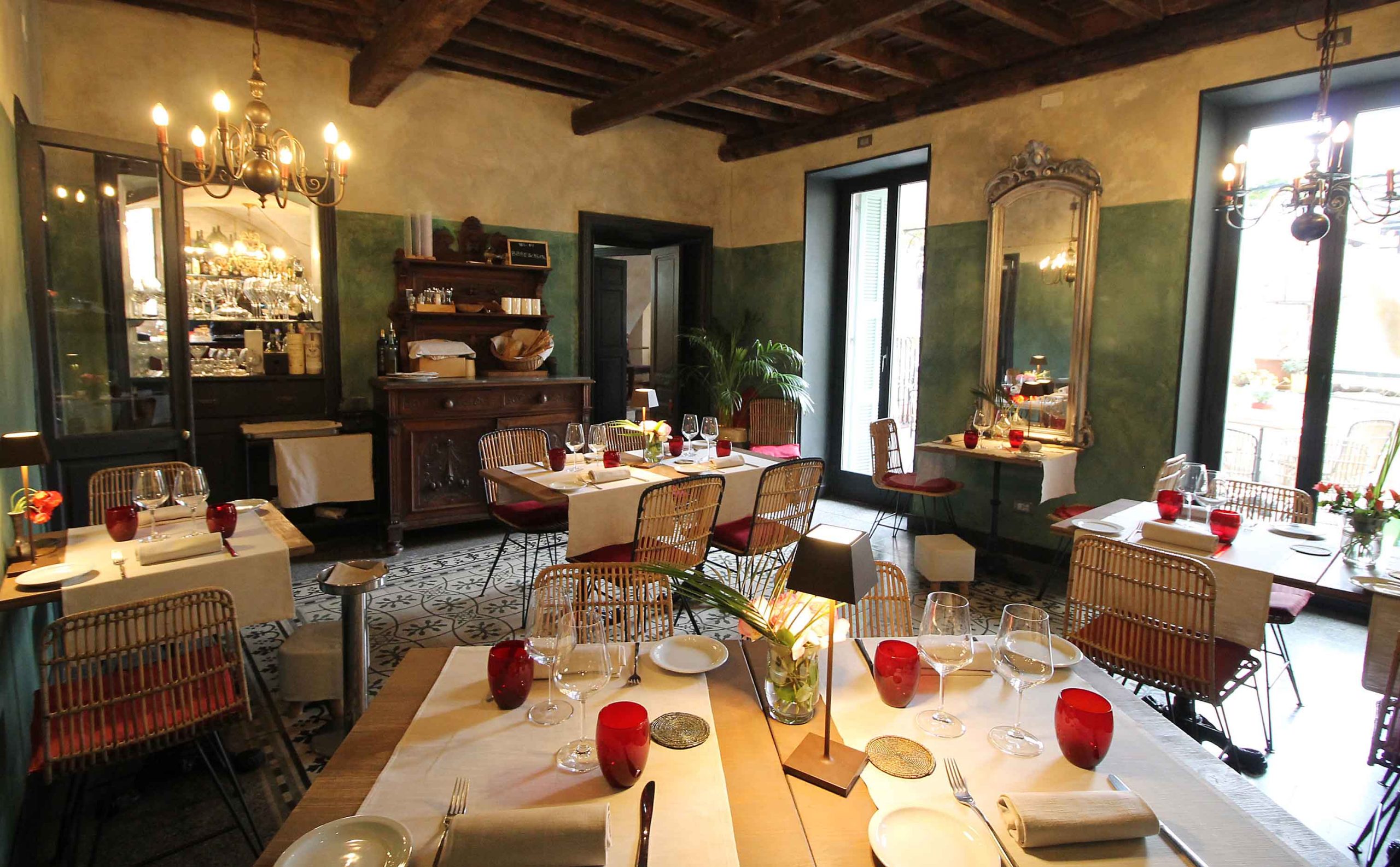
The small medieval village Pigna is situated just a few kilometres away from Ventimiglia. On the Piazza Castello right in the centre and with the old walls as a backdrop, you will find Fredrico Lanteri and his Osteria Martini.
The romantic restaurant spreads over a few rooms and a bar, all decorated in an elegant but relaxed Ligurian style. From the small terrace, stunning views over the upper Nervia valley and Castelvittorio can be enjoyed. Guests are also welcome to sit on the piazza.
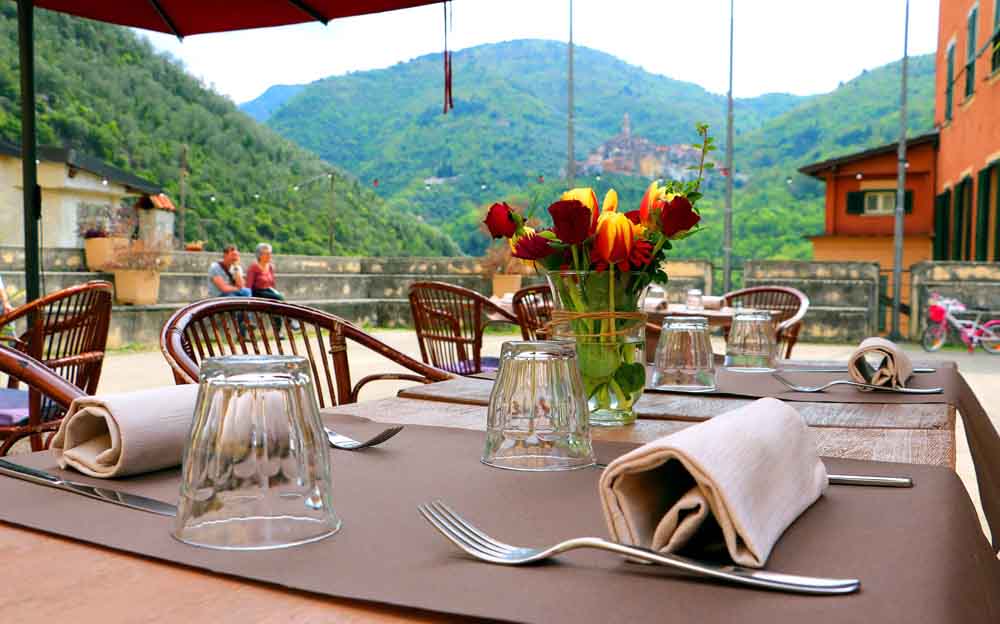
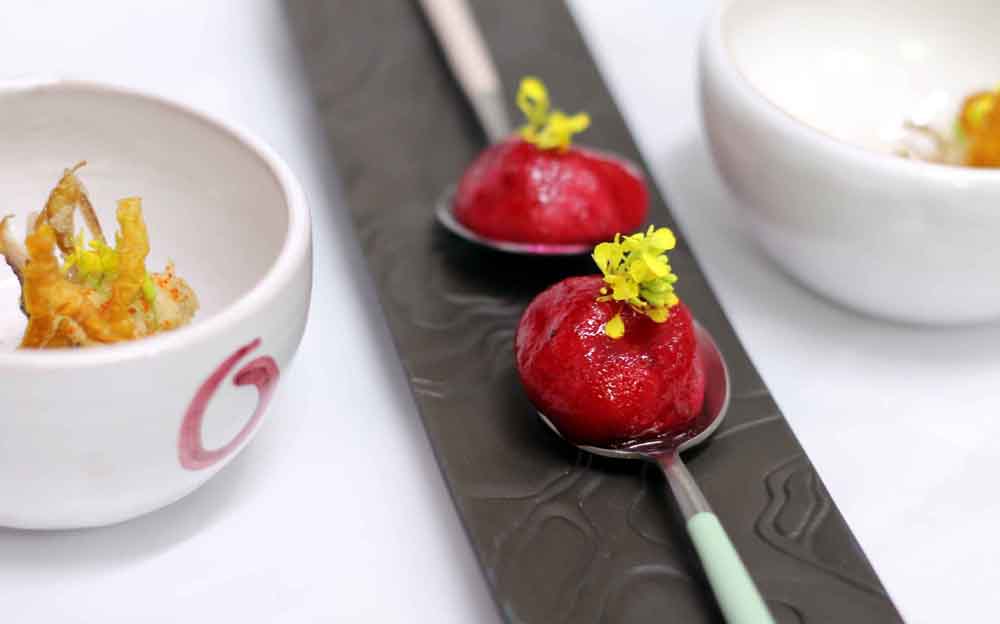
Frederico Lanteri attends to his cooking with much passion for detail. He lets his creativity and phantasy flow freely without ever becoming over pretentious. He magically creates typically Ligurian menus and pays attention to using local produce from Pigna or the vegetables garden of the Ligurian hinterland.
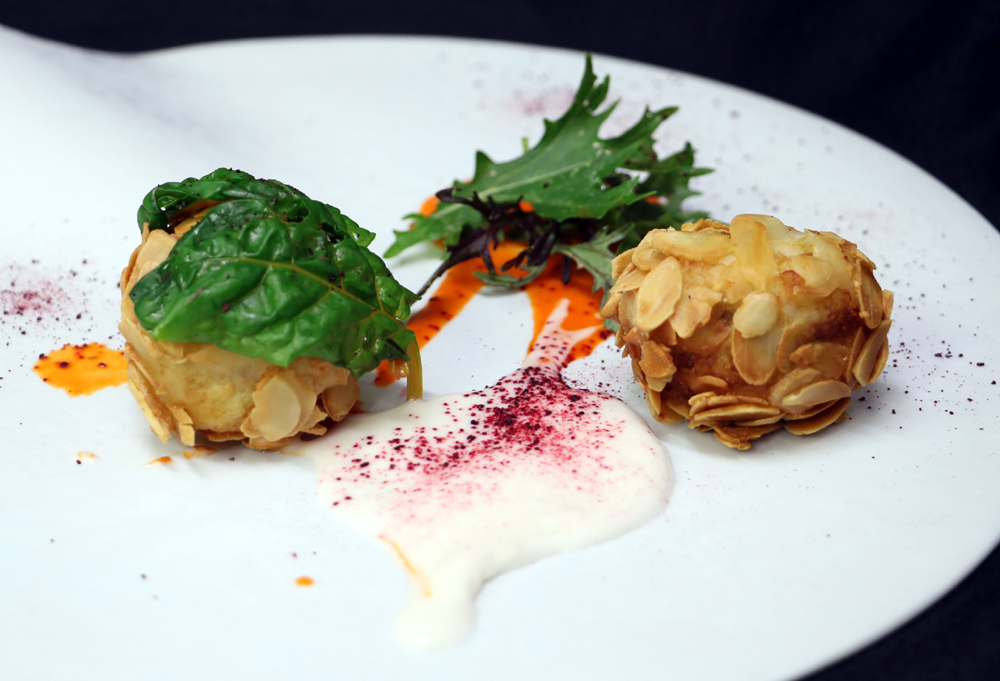
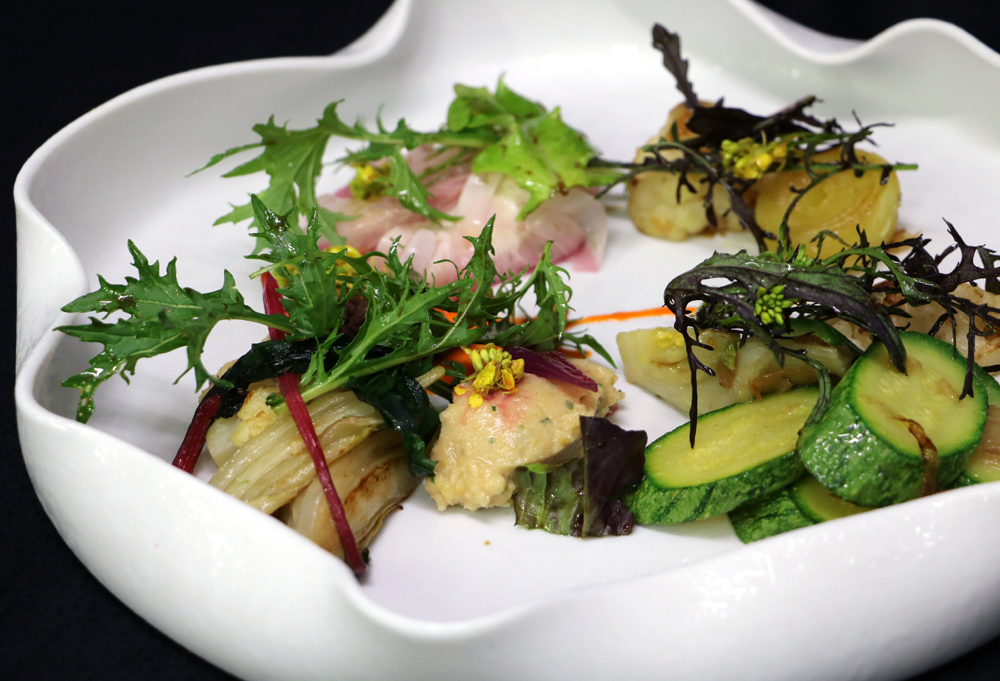
The guests at the Osteria Martini adore his large selection of starters cooked with the freshest of fish or his ravioli stuffed with interesting combinations of various herbs. The attentive waiters will of course recommend the perfect wine to accompany each course.
Every now and then there is live music playing discreetly in the background – usually a combination of guitar playing and singing which is very popular with the guests.
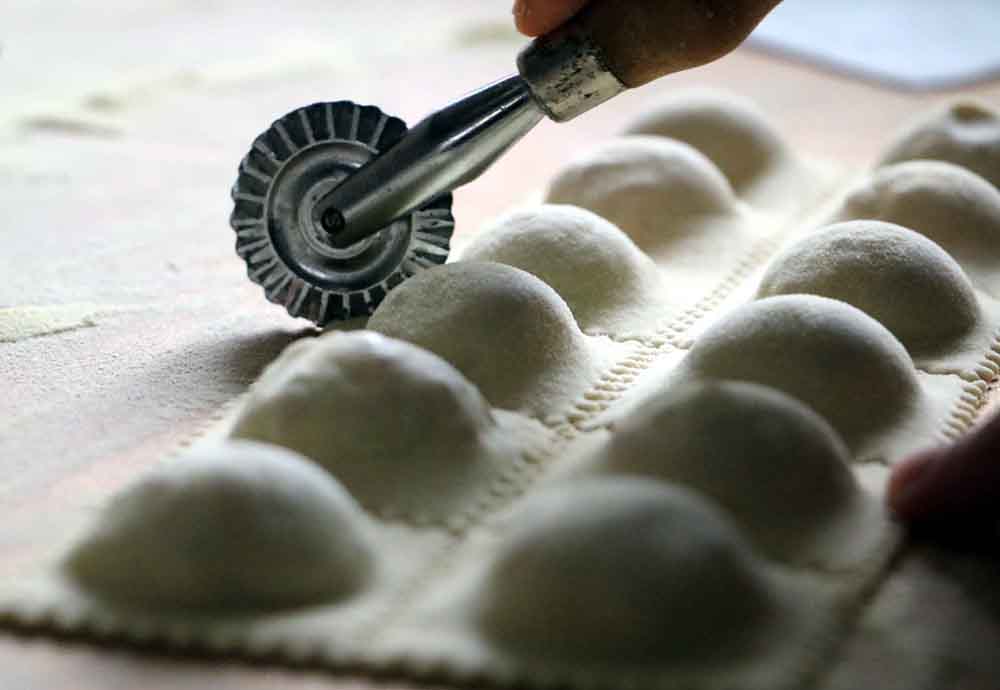
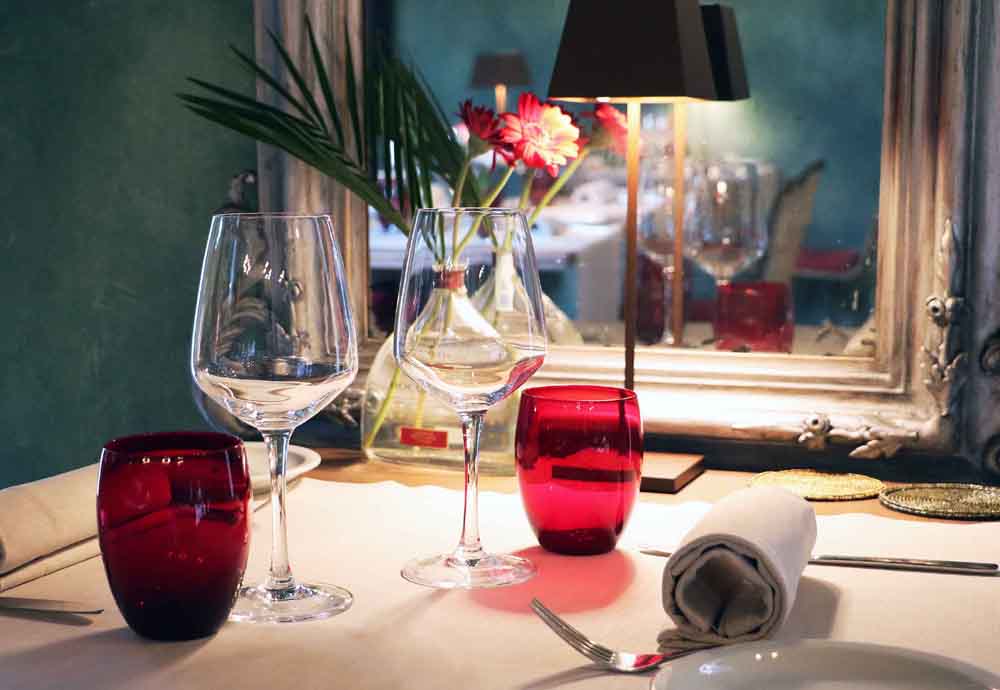
If you would like to eat at this excellent Osteria, we recommend booking a table in advance.
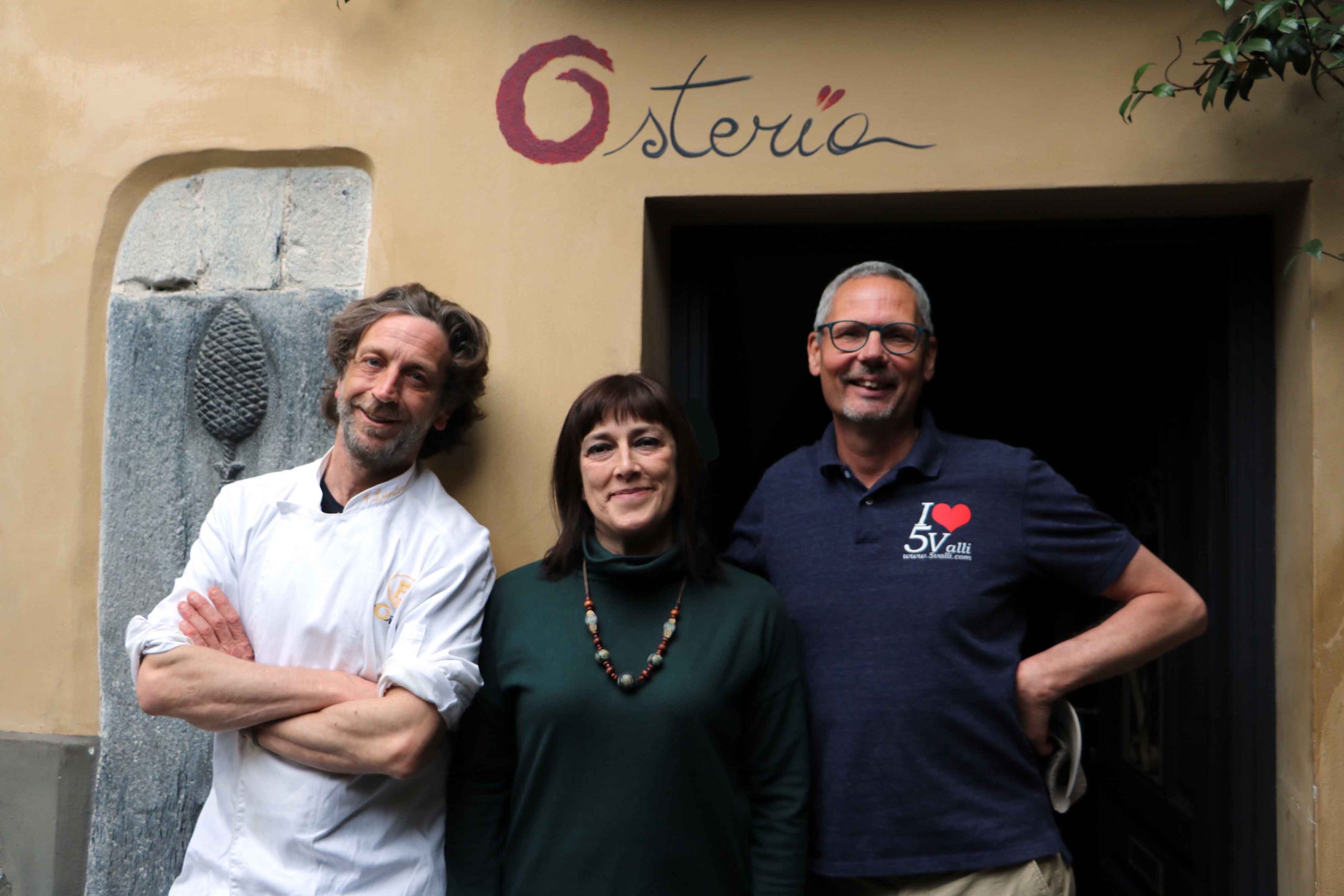
This is where you will find Osteria Martini:
Via Piazza Castello 10
18037 Pigna (IM)
https://www.federicolanteri.it
info@federicolanteri.it
+39 349 638 1330
Opening Times:
Closed on Monday and Tuesday
Wednesday and Thursday 12.30 – 15.00
Friday 9.00 – 17.00 and 19.30 – 21.30
Saturday and Sunday 12.30 – 14.30 and 19.30 – 21.30
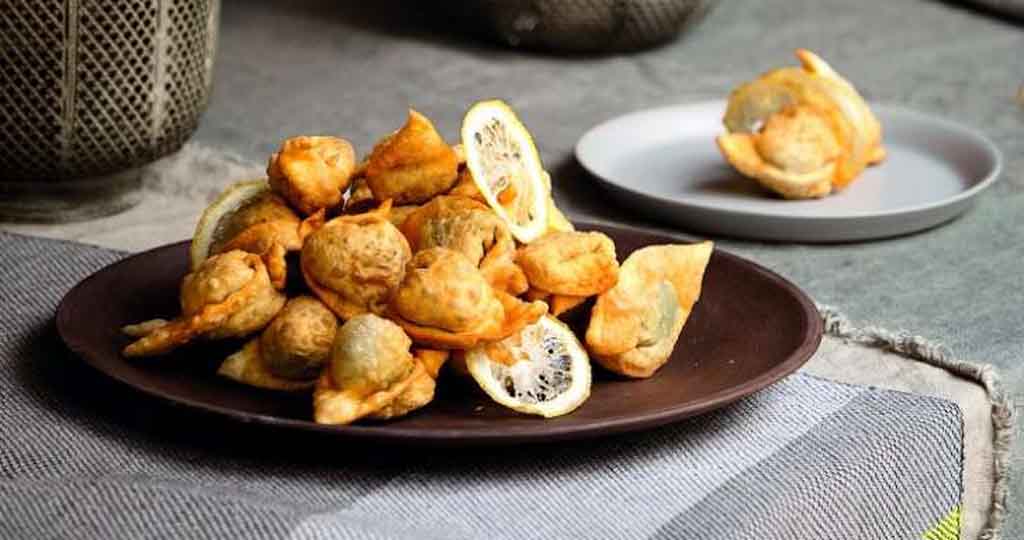
BARBAGIUAI – TYPICAL FOR THE NERVIA VALLEY
Fried Ravioli stuffed with Pumpkin, Rice and Cheese
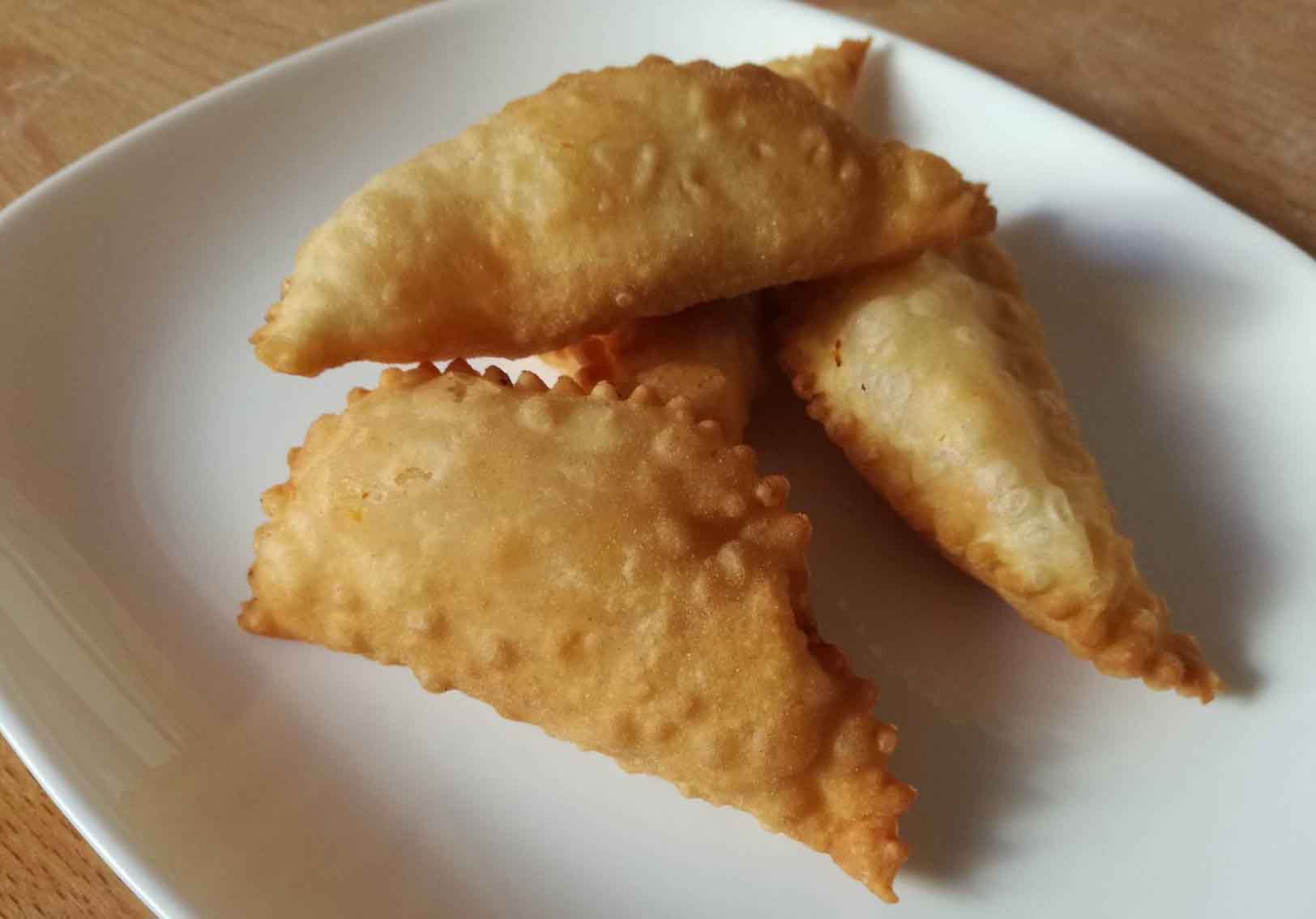
This dish comes from Camporosso in the hinterland of Imperia and is a very popular autumnal dish. The name itself is very old and was seemingly named after an uncle („zio“ or „barba“) who was called Giovanni („Giua“) – resulting in „Barbagiuai“.
It is the combination of the two main ingredients, sweet pumpkin and strong taste of Brusso (fermented ricotta) which gives this dish such character.
Ingredients:
For the dough:
- 600 g flour
- Water
- Taggiasca Olive oil
- Salt
- For the filling:
- 1 kg pumpkin
- 150 g rice
- 1 egg
- 2 Table spoon Brusso
- 100 g Parmesan
- Sardinian marjoran (sweet)
- ½ garlic clove
- Pepper, salt
- Taggiasca olive oil
- Milk
Method:
Mix the flour, tepid water, oil and salt into a dough, wrap in foil and let it rest.
Meanwhile prepare the filling. Dice the pumpkin and blanch in rolling hot water or bake in the oven at 180 until soft. Mash the pumpkin with a fork or in a food processor. Cook the rice in milk and water until al dente.
In a bowl combine rice, cheese, mashed pumpkin (cooled down), salt, pepper, egg, garlic and finely cut marjoran.
Now roll out the dough very thinly and divide into two halfs. Now carefully place equally spaced spoonsful of filling on the other half of the dough. Cover this part with the first half of the dough and press the two halves together around each dollop of filling. Then cut out squares of six to eight cm in size and separate with a toothed wheel cutter.
You can now bake the ravioli on a baking tray in the oven or fry in native olive oil until they turn crisp and golden yellow. Transfer to a piece of kitchen towel to get rid of excess oil. Sprinkle with salt and serve hot. (Barbagiuai are also delicious when eaten cold)
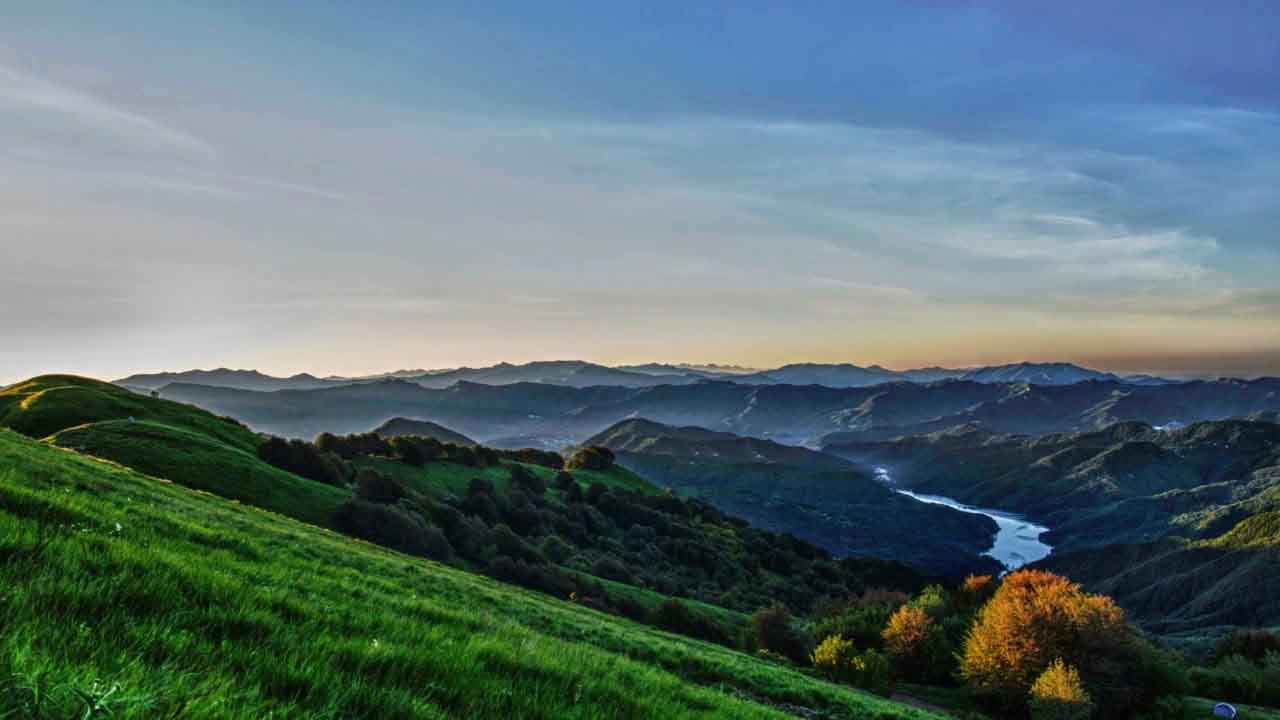
If you would like to explore the Parco Naturale regional dell’Antola in a more sportive manner, autumn is a perfect time to venture out on horseback, take a canoe to the big rivers in the Val Trebbia or go fishing or hiking – whatever takes your fancy.
Autumn Walks through the Ligurian Hinterland
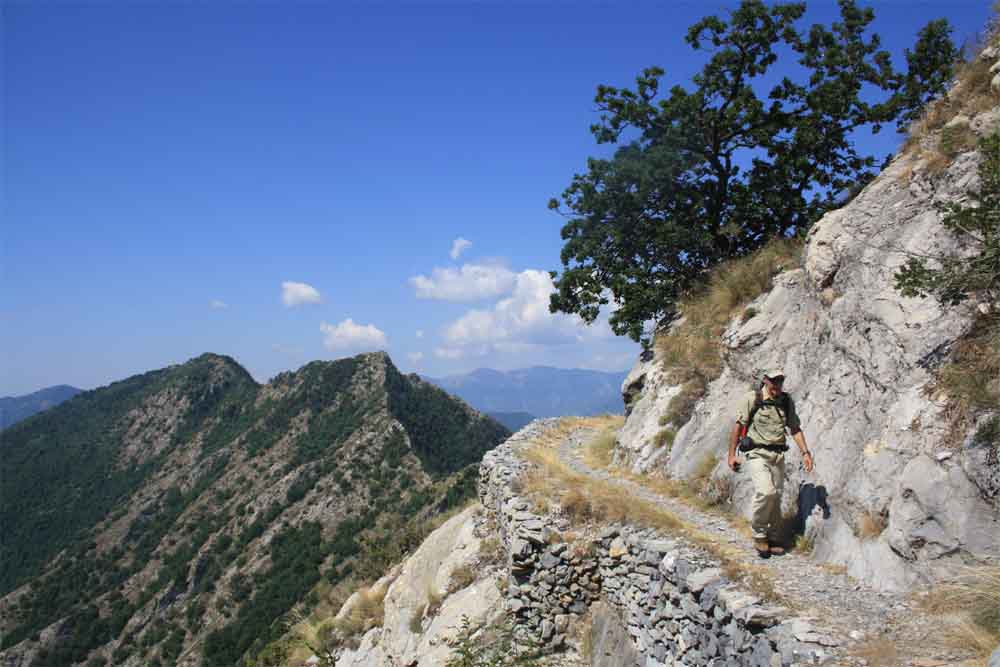
Liguria’s hinterland is an open invitation to all walking enthusiasts and autumn is the perfect time to head out into the wild and open wilderness. Up to when the first snowfalls occur in mid October depending on altitude and weather, there are plenty of hiking trips that await.
One of the most popular hiking routes is the „Alta Via die Monti Liguri“ – it covers 400 km through all of Liguria from Ventimiglia all the way to La Spezia. The most spectacular stretch passes the Monte Toraggio, some 15 km away from Dolceacqua.

RUBENS AND THE PALAZZI OF GENOVA
The Baroque Master – 06.10.2022 – 22.01.2023
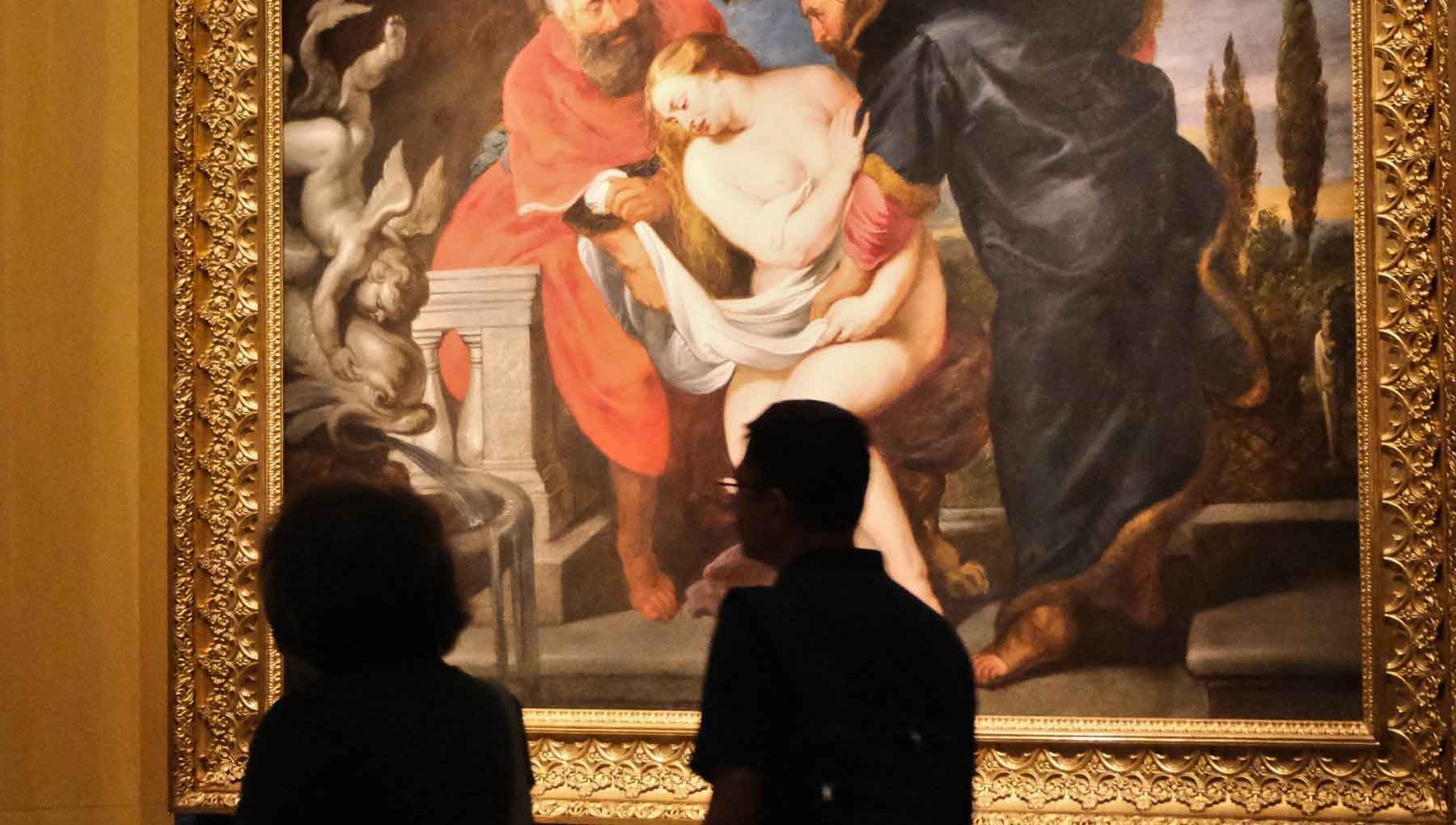
The exhibition can be seen in the Palazzo Ducale and other Genovan palaces and has more than 150 pieces of art by the great Flamish artist of the 17th century on display. Among them are some 20 paintings on loan from various European collections and museums. The „Self portrait“ of the young Rubens which has never before left Antwerpen and the „Portrait of a Lady“, the face of Violante Maria Spinola Serra from Genovan flown over from Oxfordshire will be on display.
Pieter Paul Rubens (28.6.1577 in Siegen – 30.05.1640 in Antwerp) was the most influential Flamish painter of the 17th century and is regarded as the archetype baroque artist. Between 1600 and 1607 he paid a number of visits to Genova and entertained close relationships with some senior members of the local aristocracy.
The exhibition also highlights the cultural and artisitic importance Genova enjoyed in the 17th century as it shows paintings by artists Rubens met or worked with. Among them are artists like Luca Cambiaso, Sofonisba Anguissola, Bernado Castello, Jan Wildens or Frans Snyders.
Palazzo Ducale Genova
Piazza Matteotti 9
Genua
Infos: https://palazzoducale.genova.it






